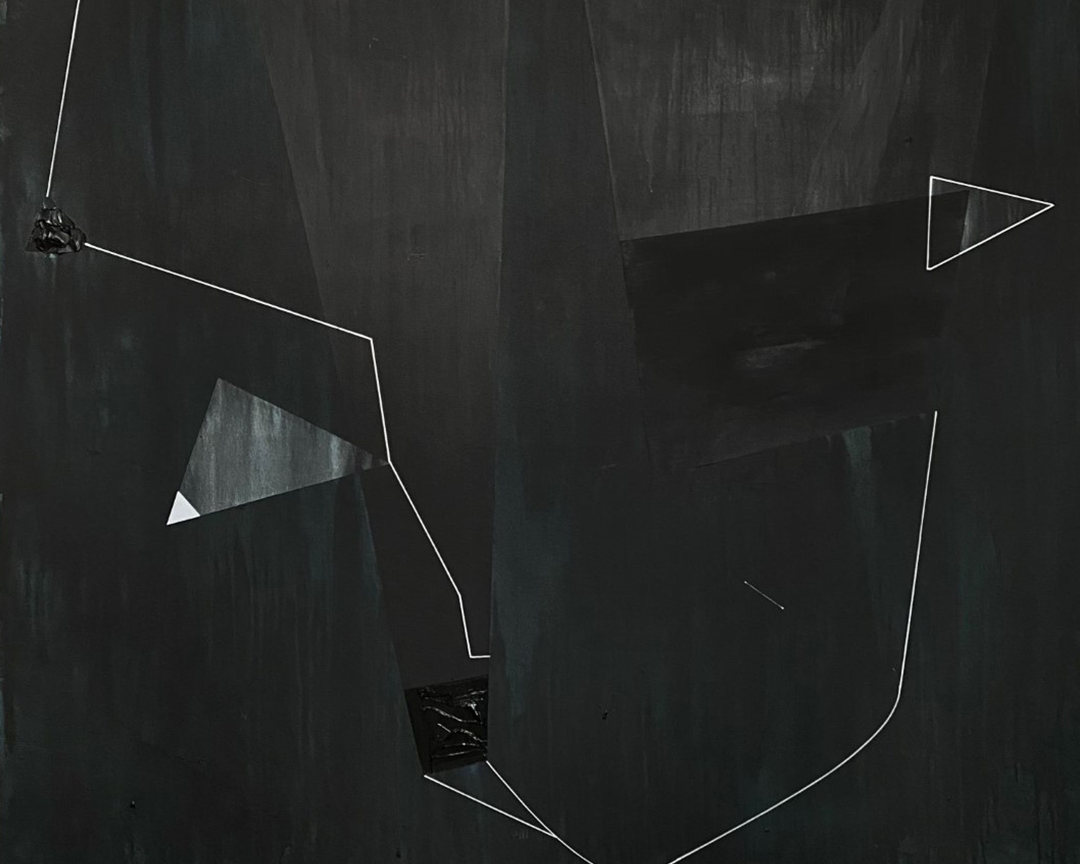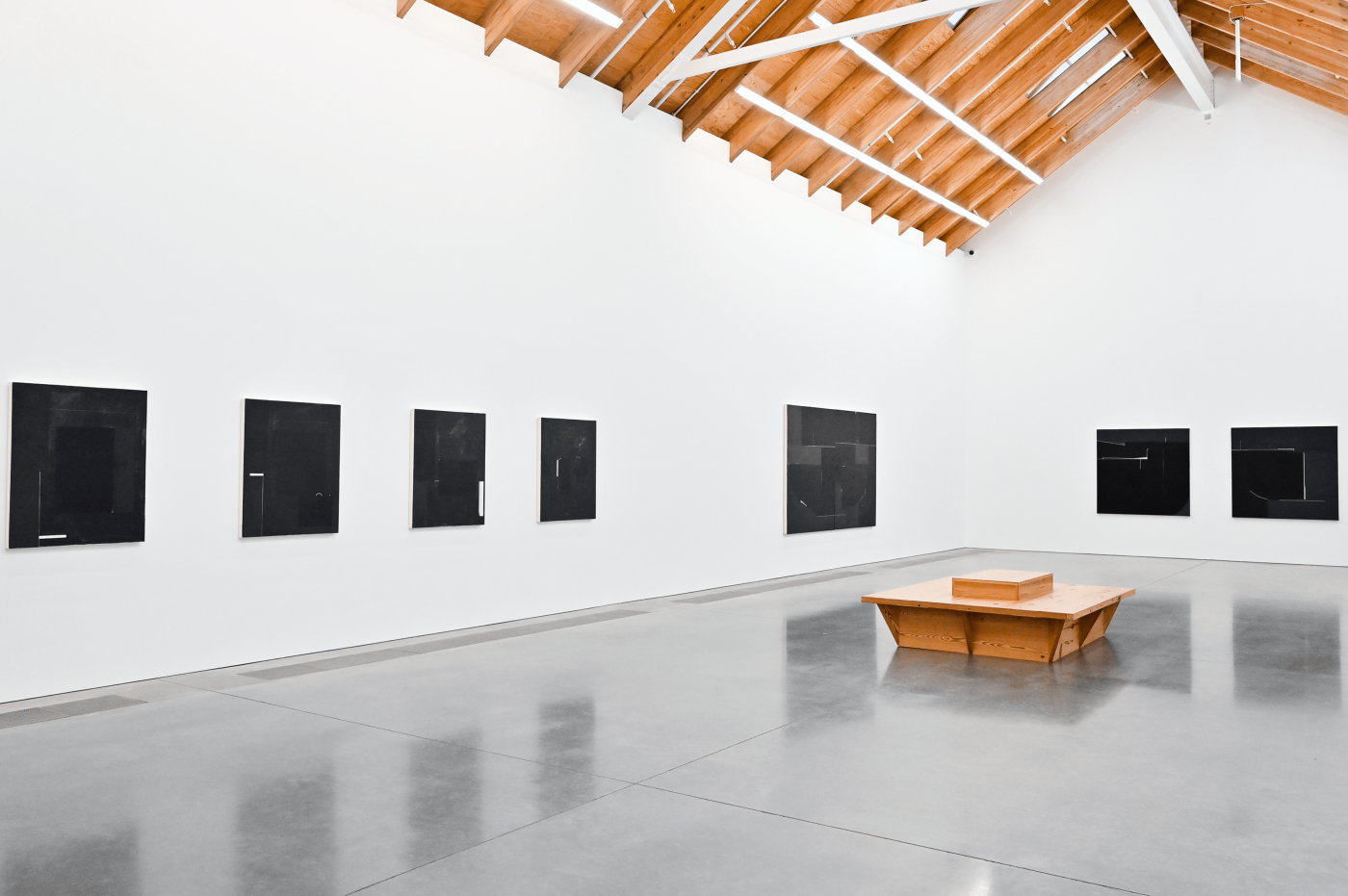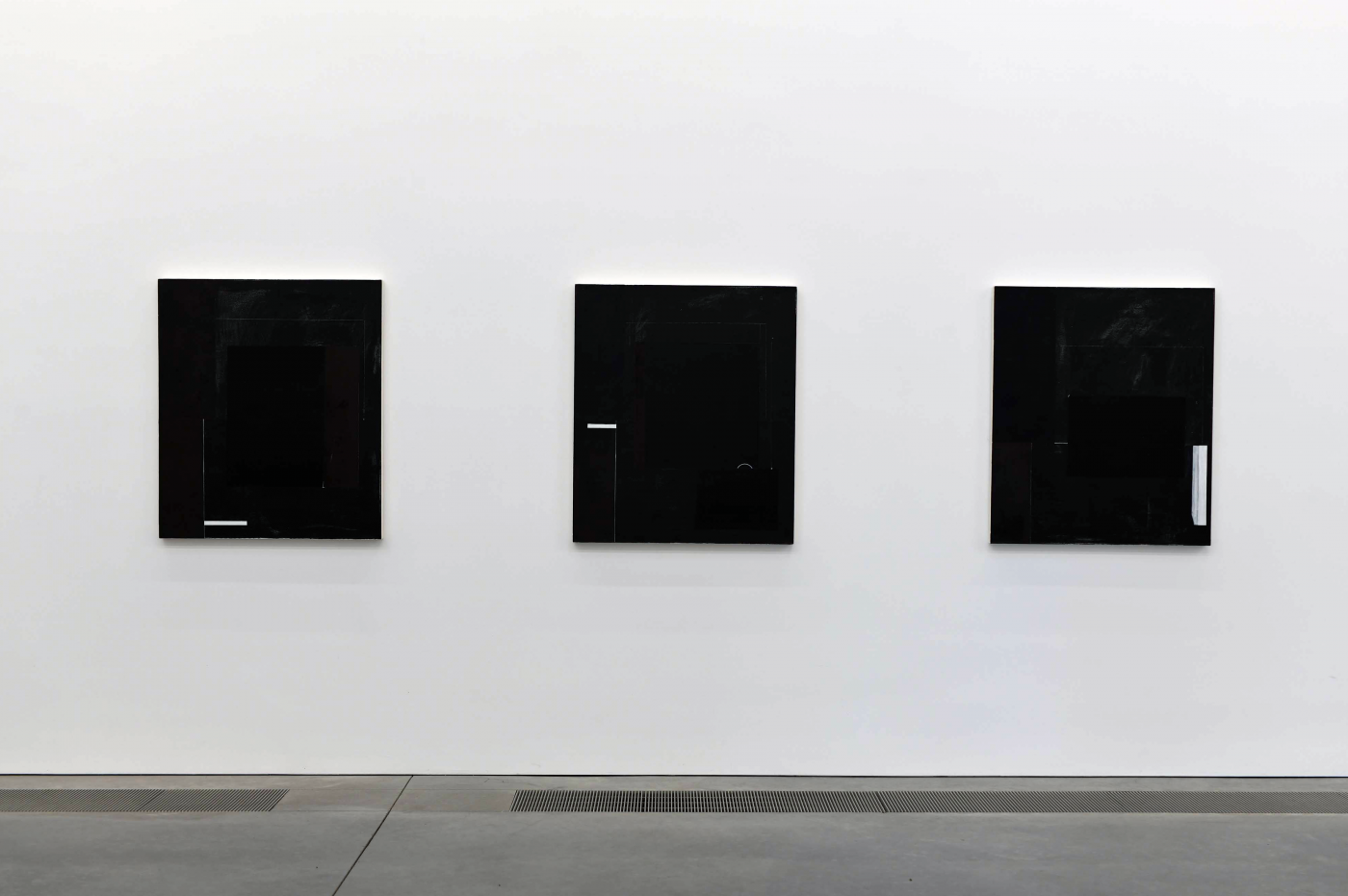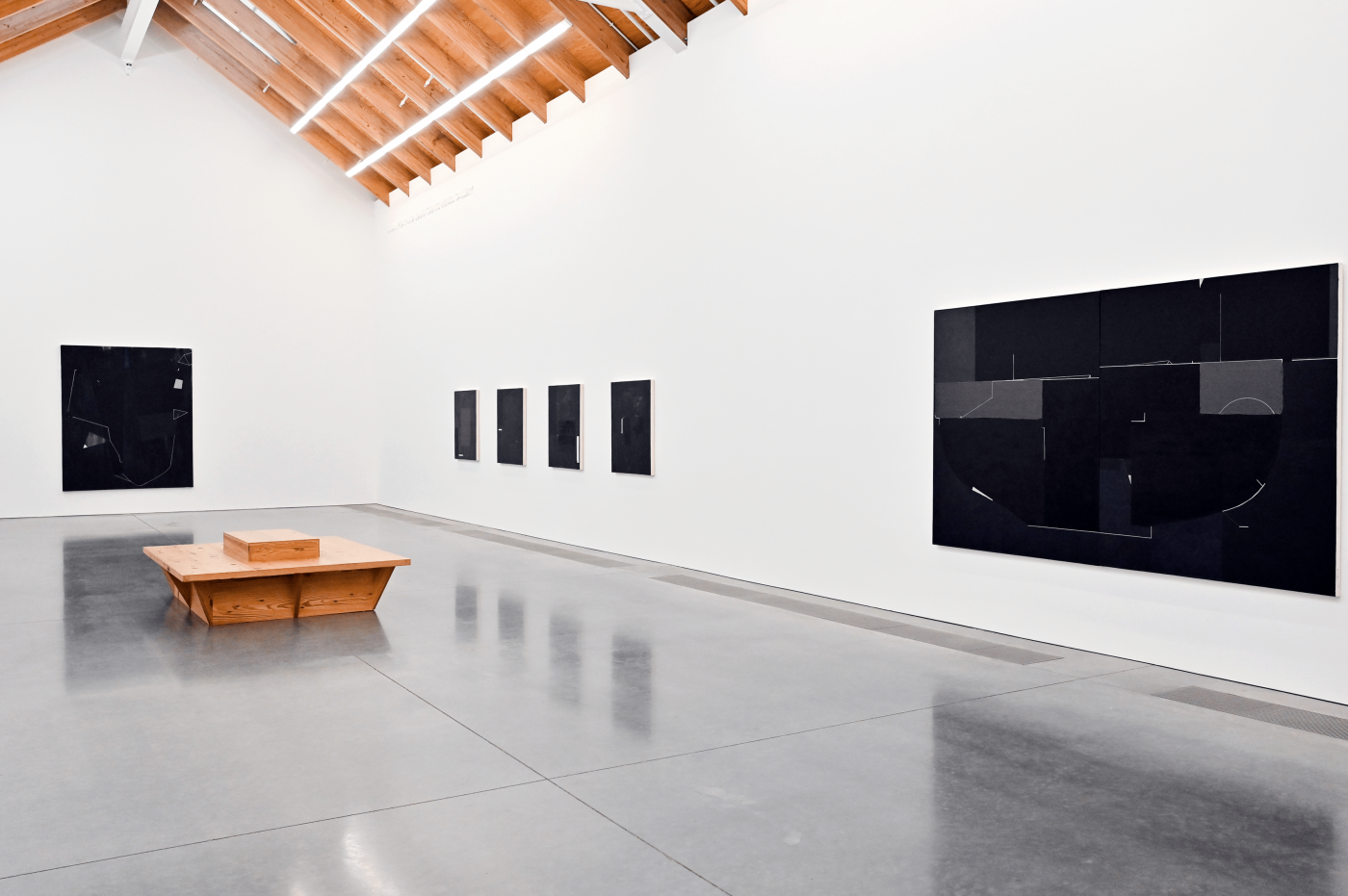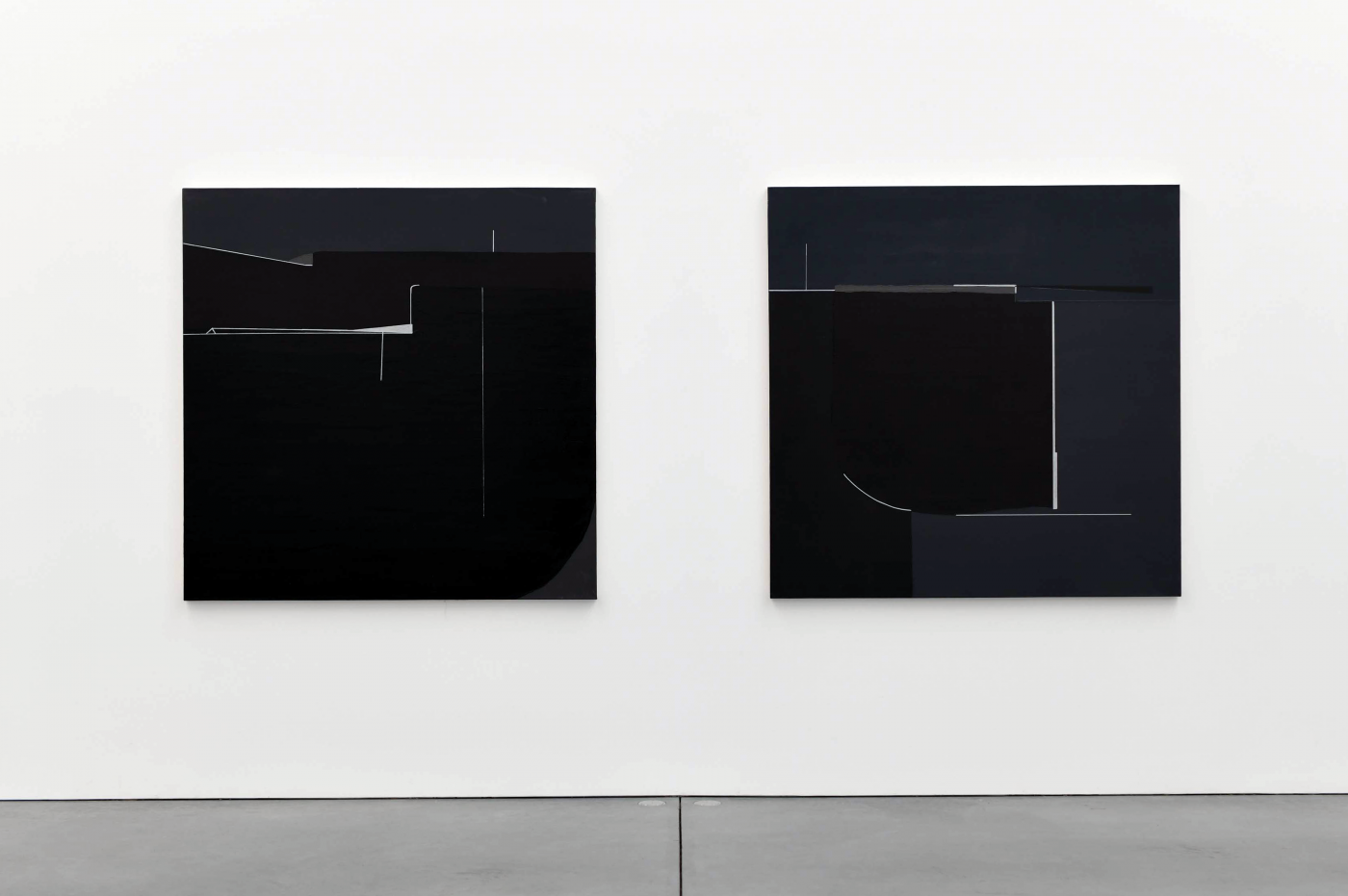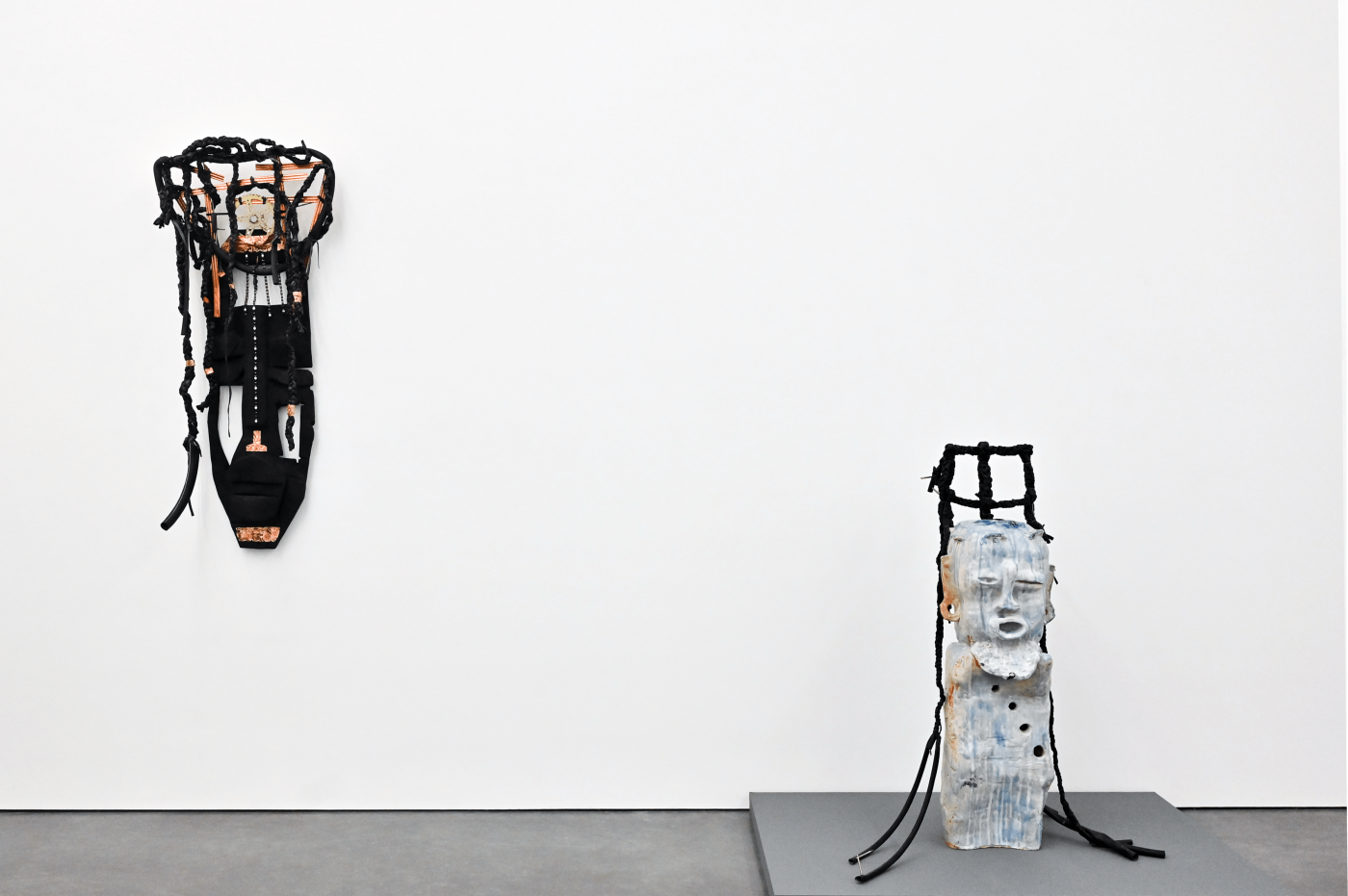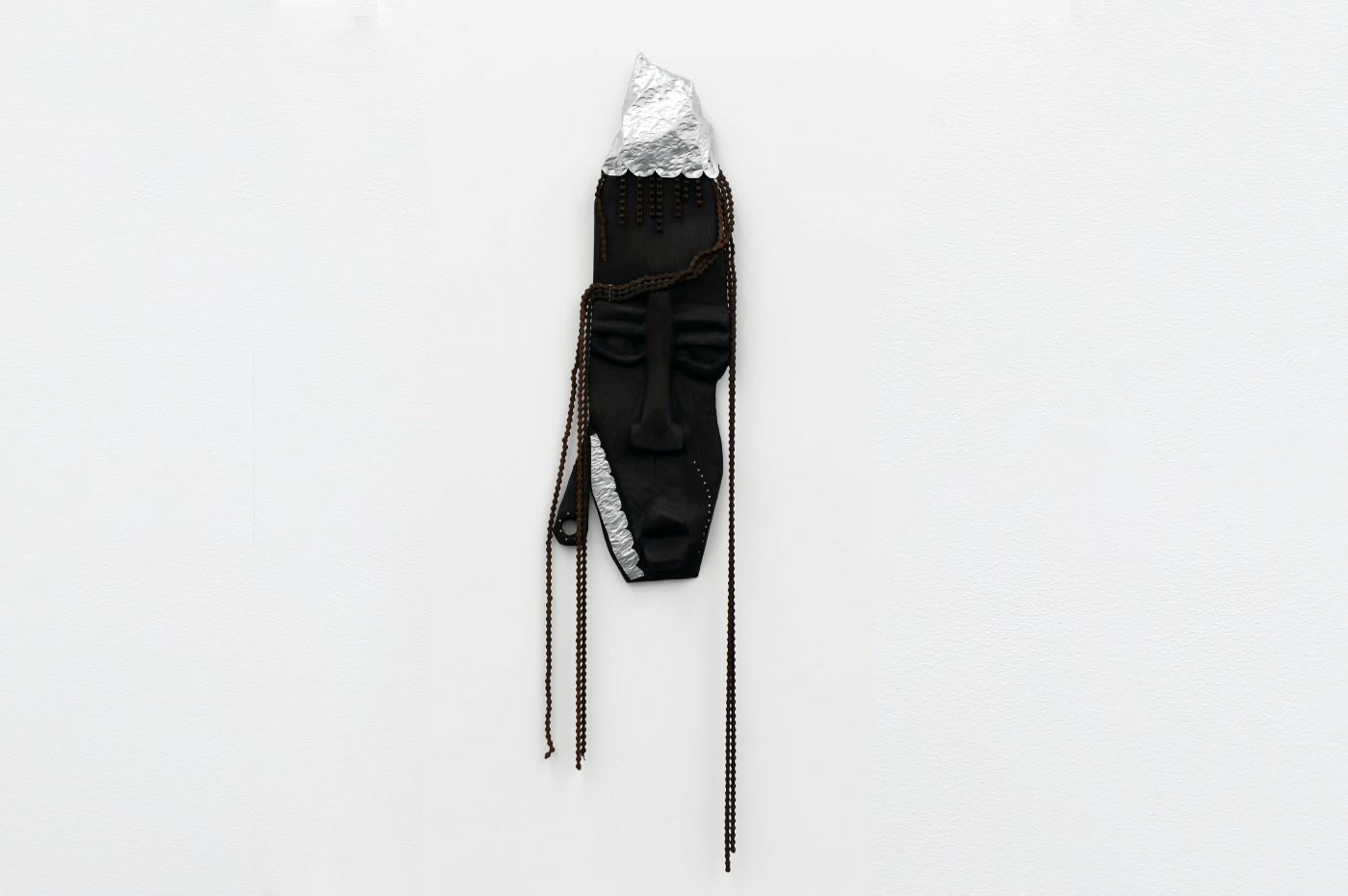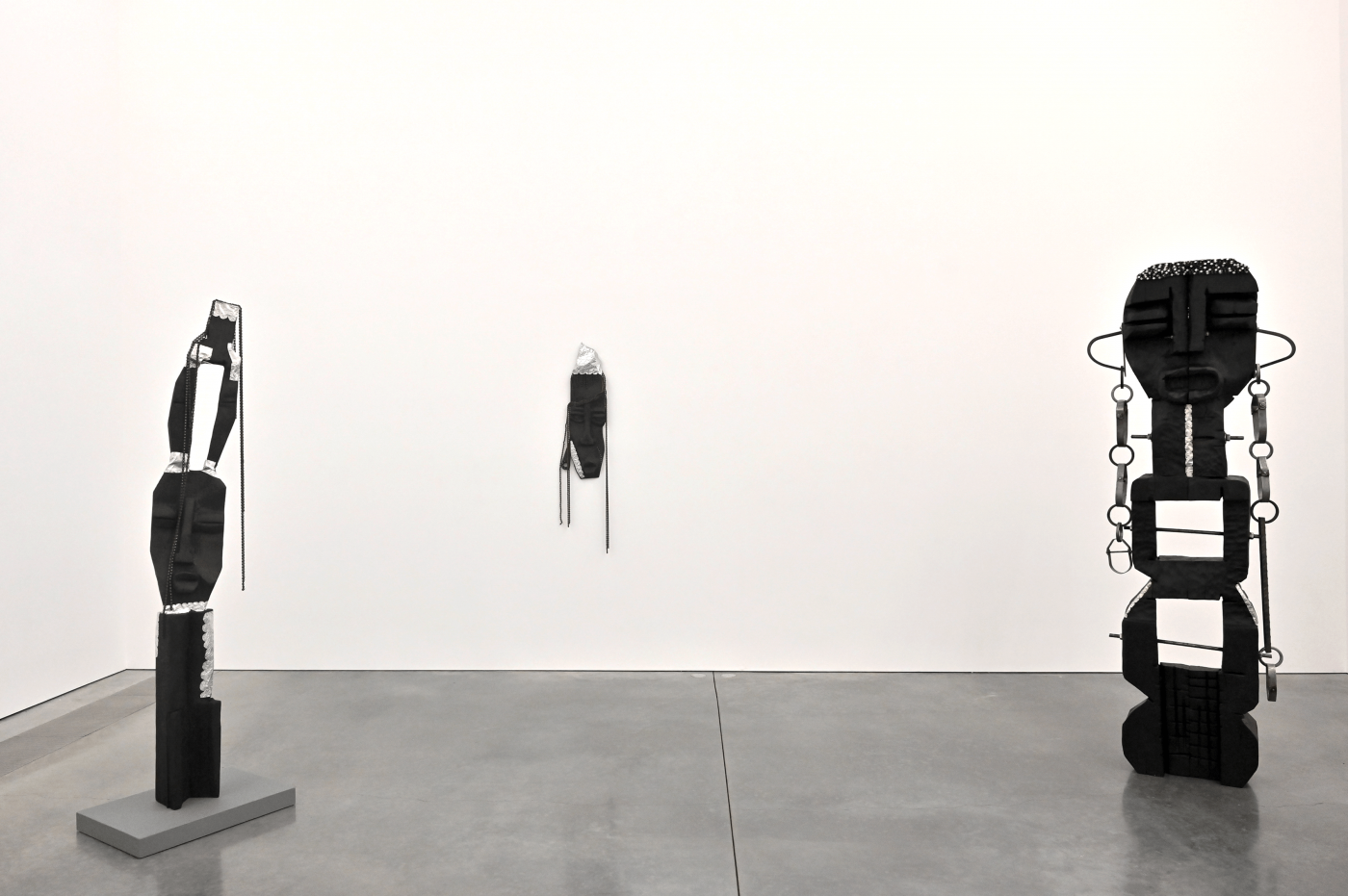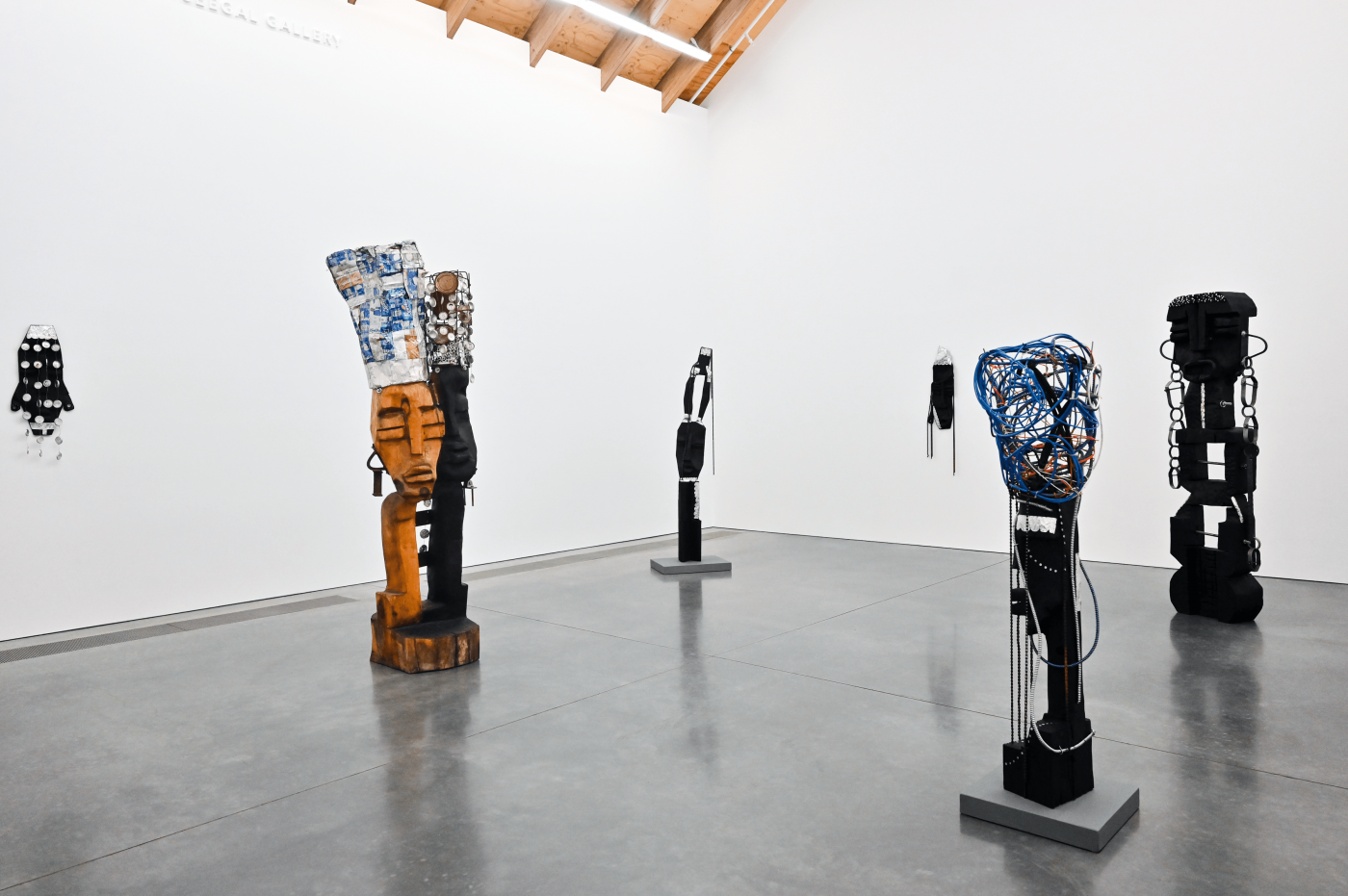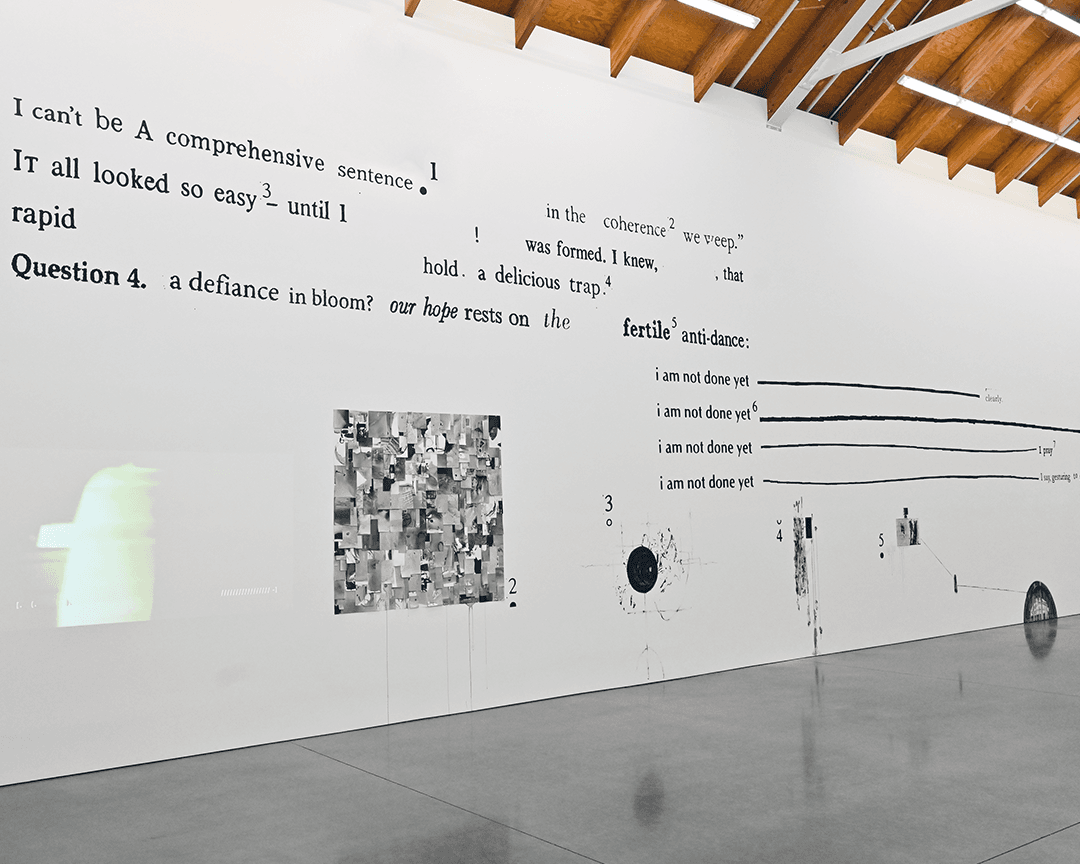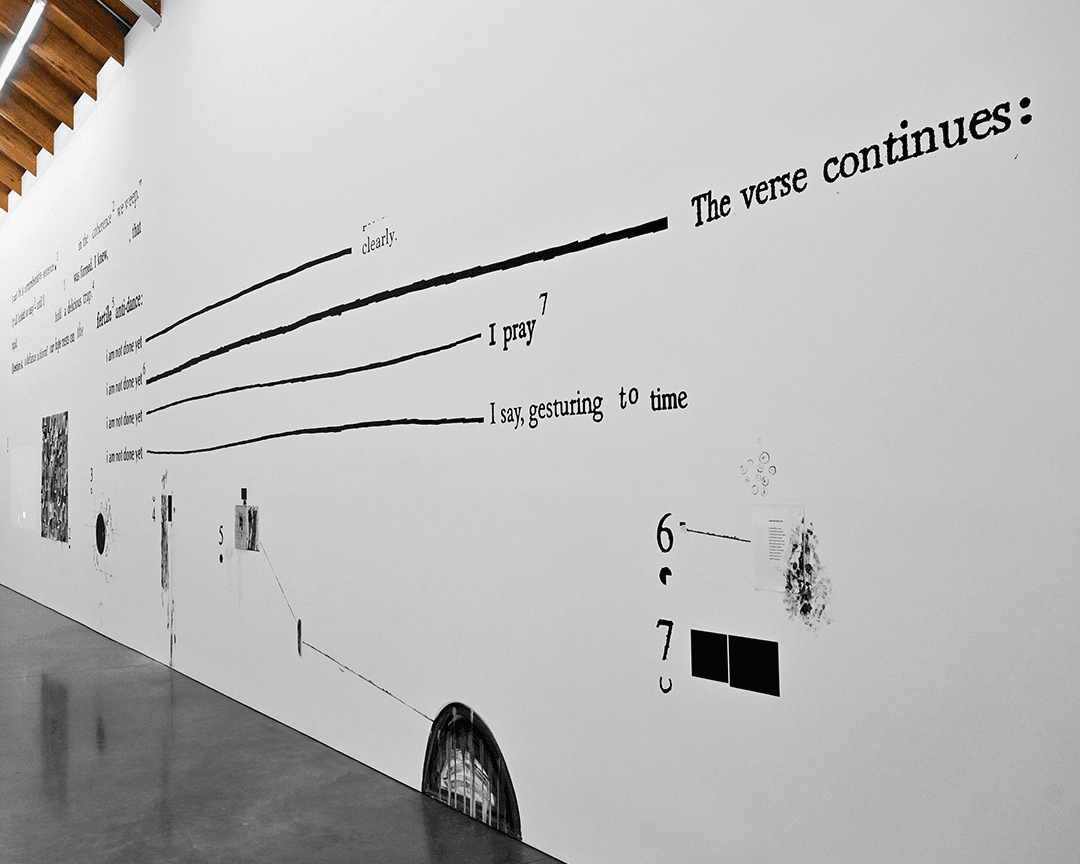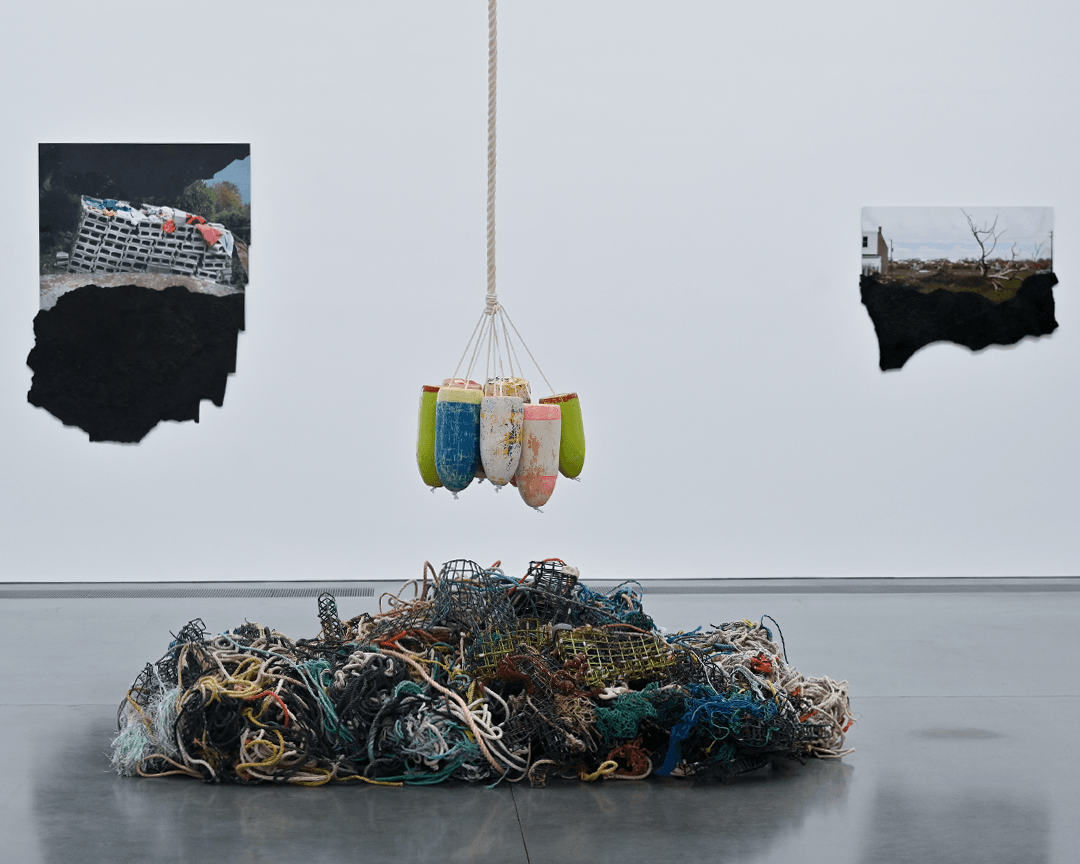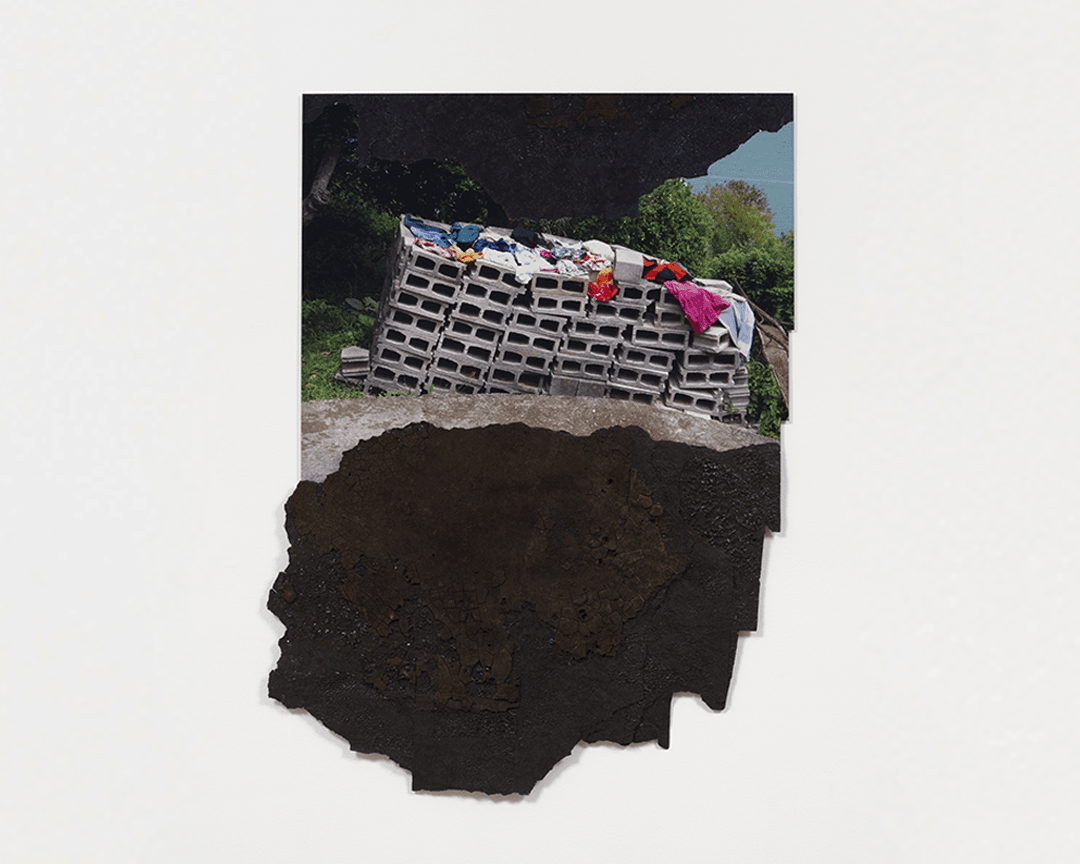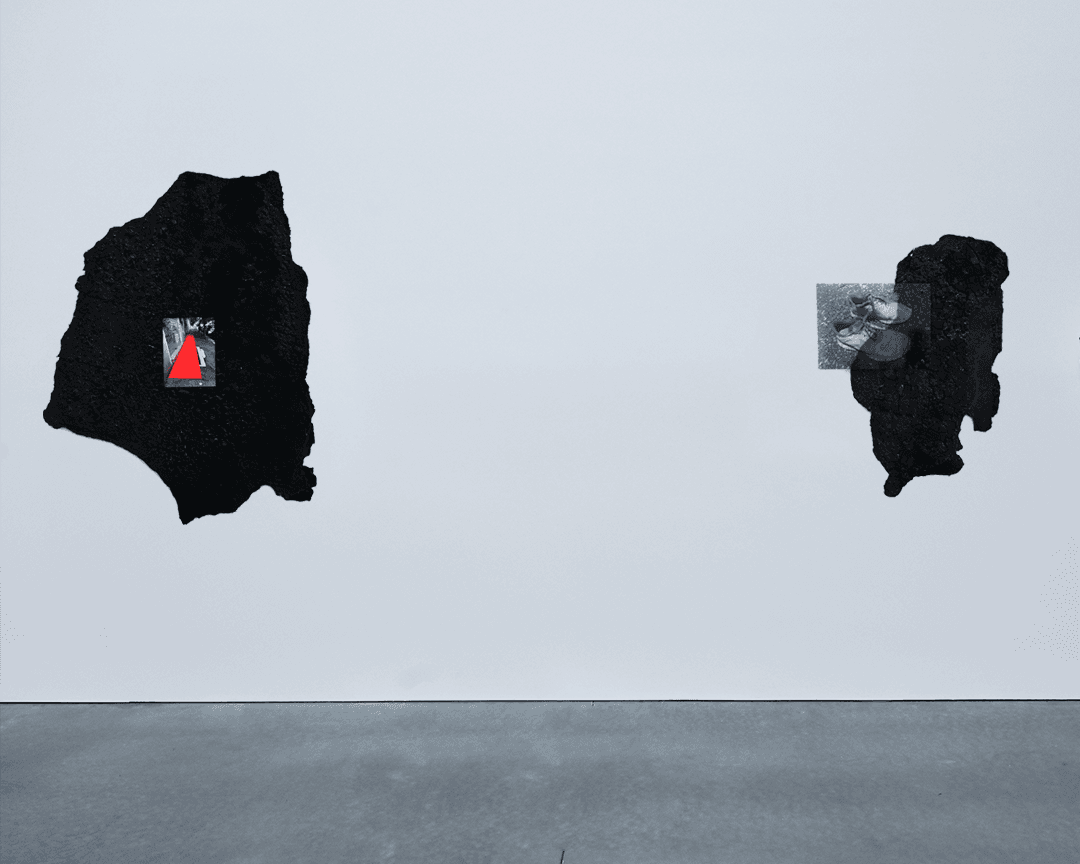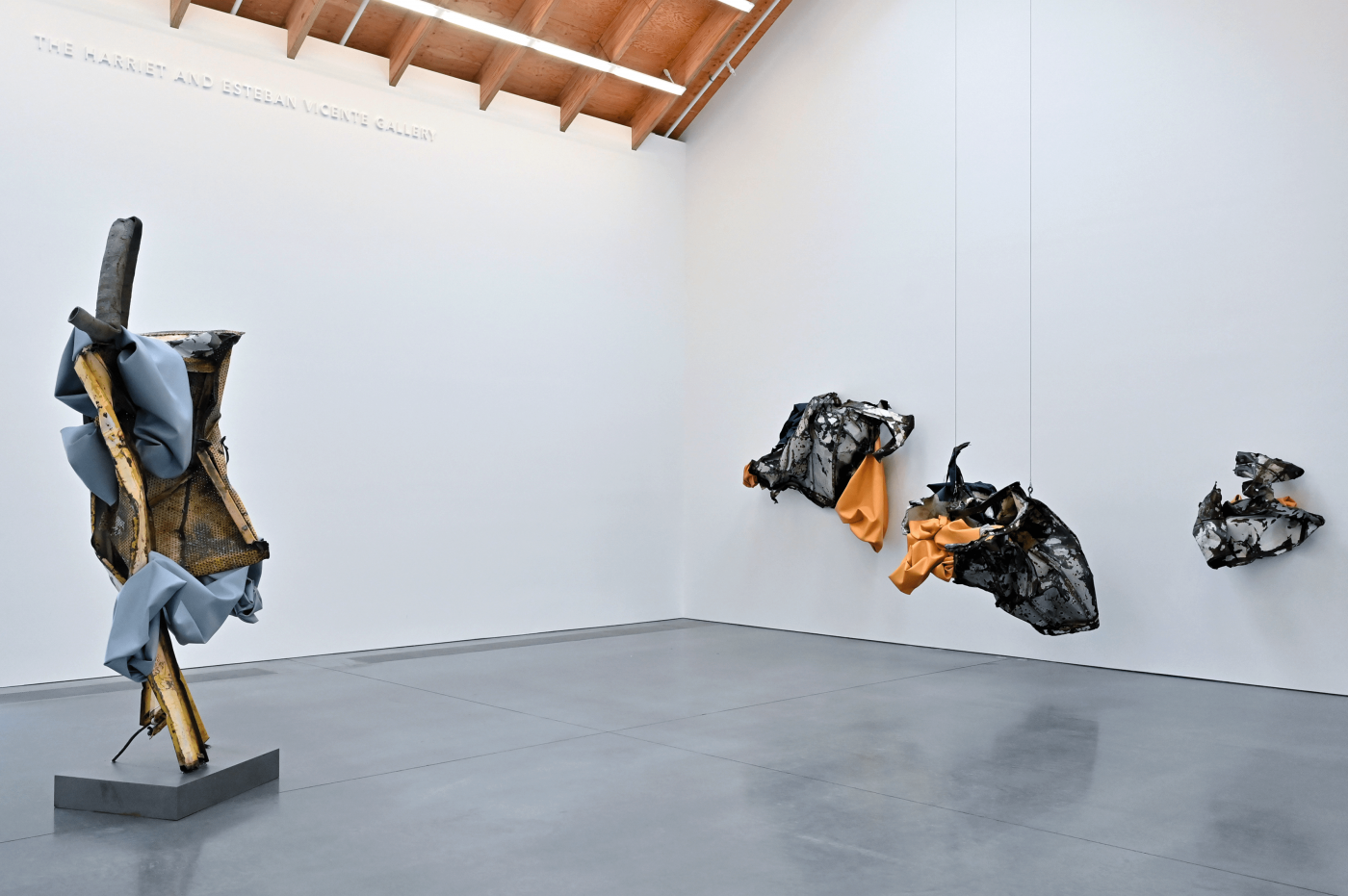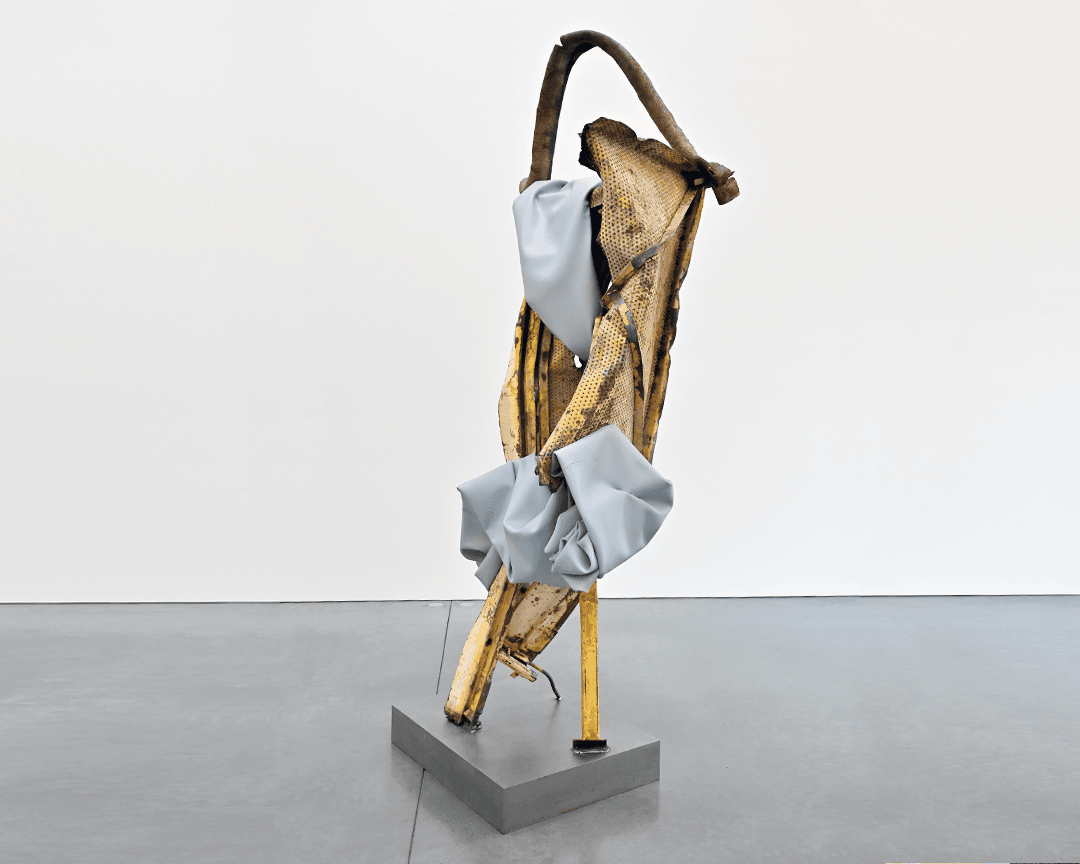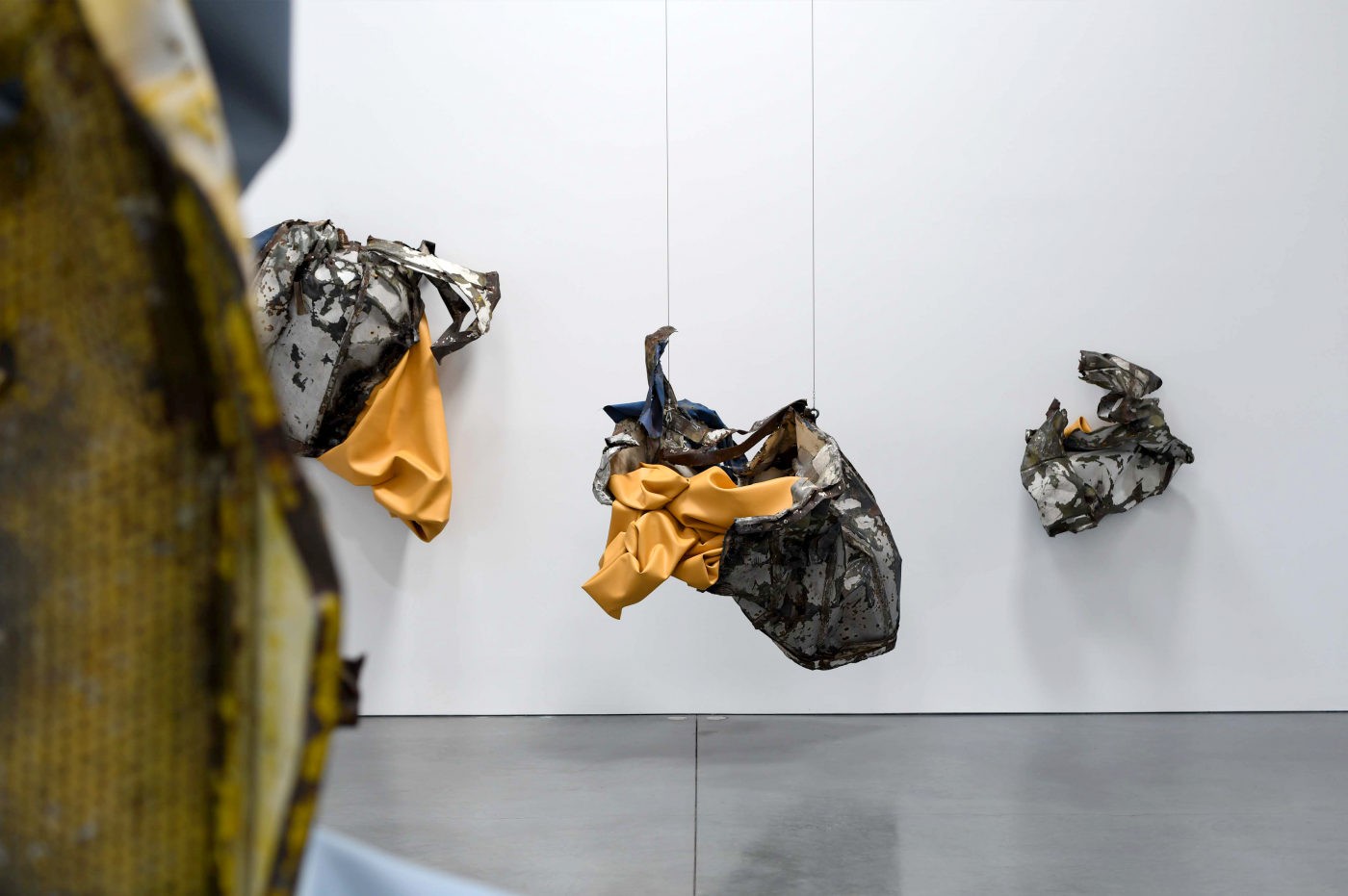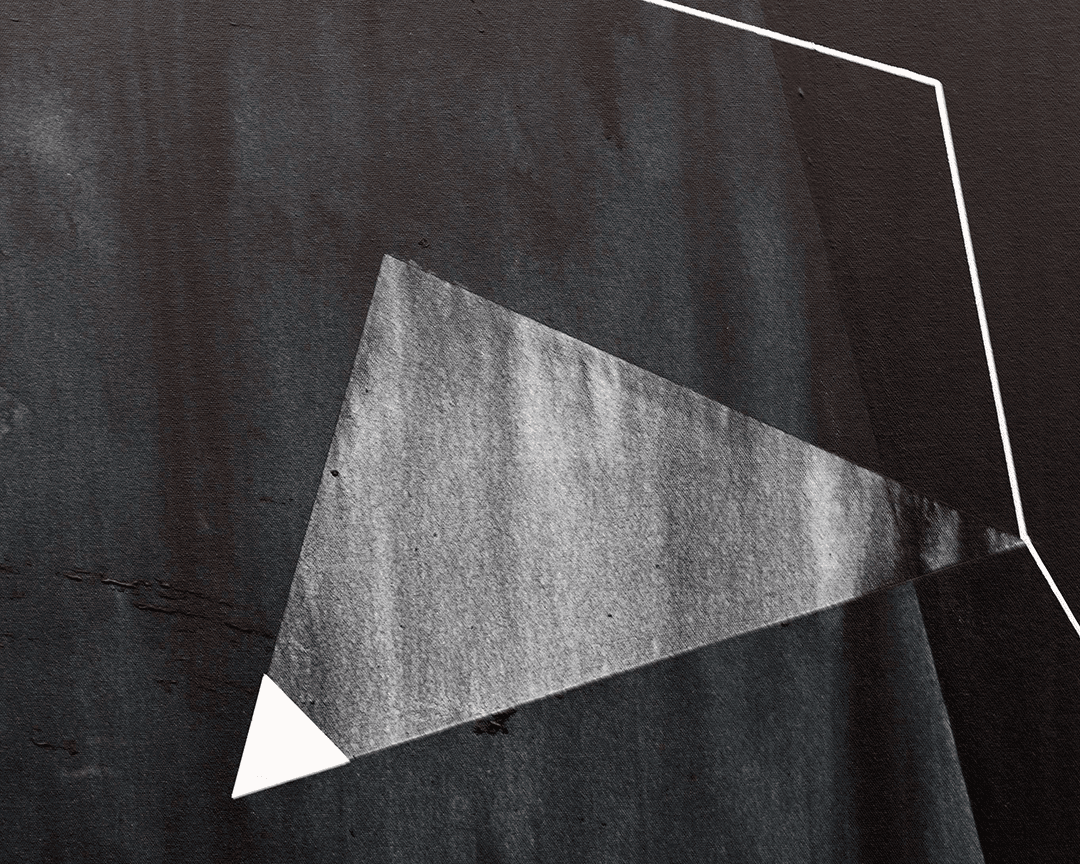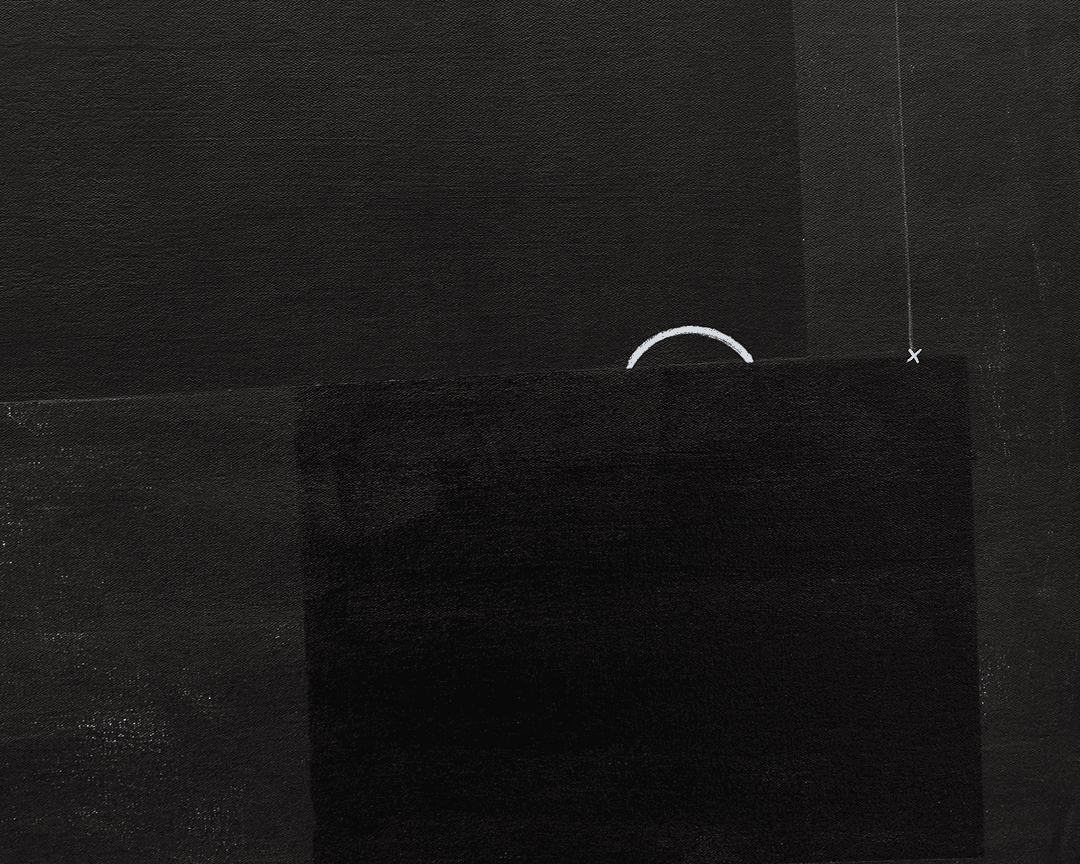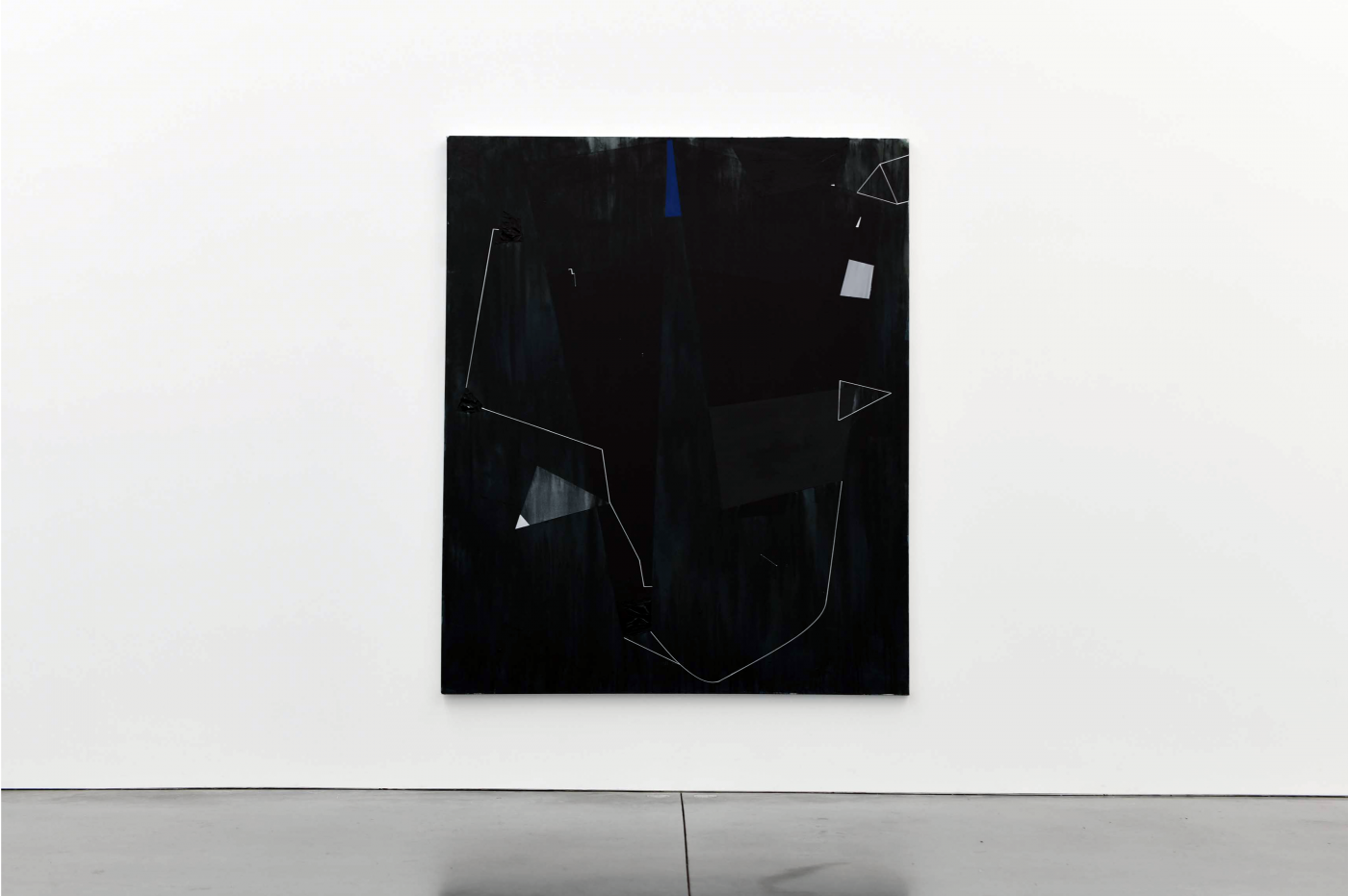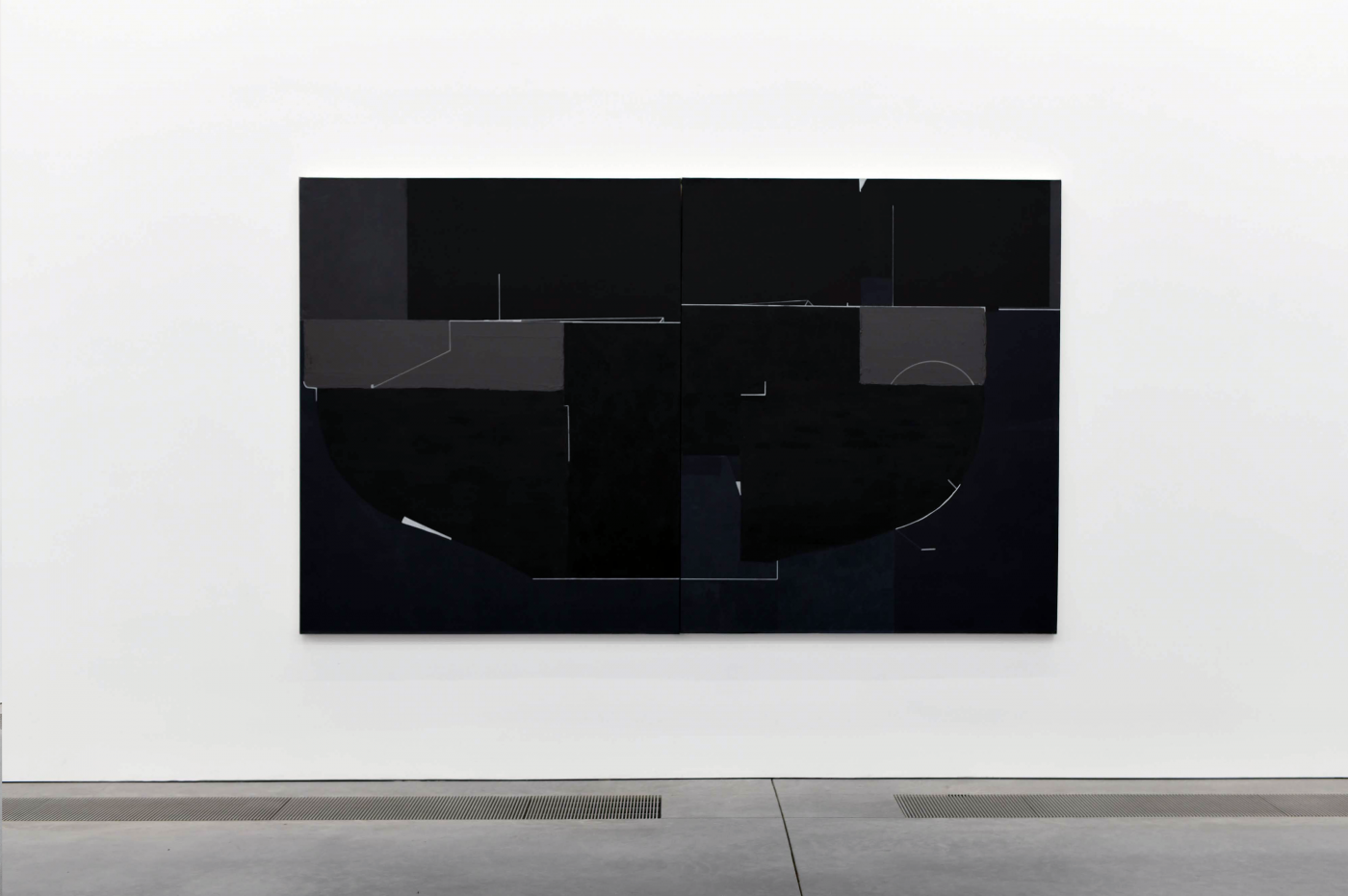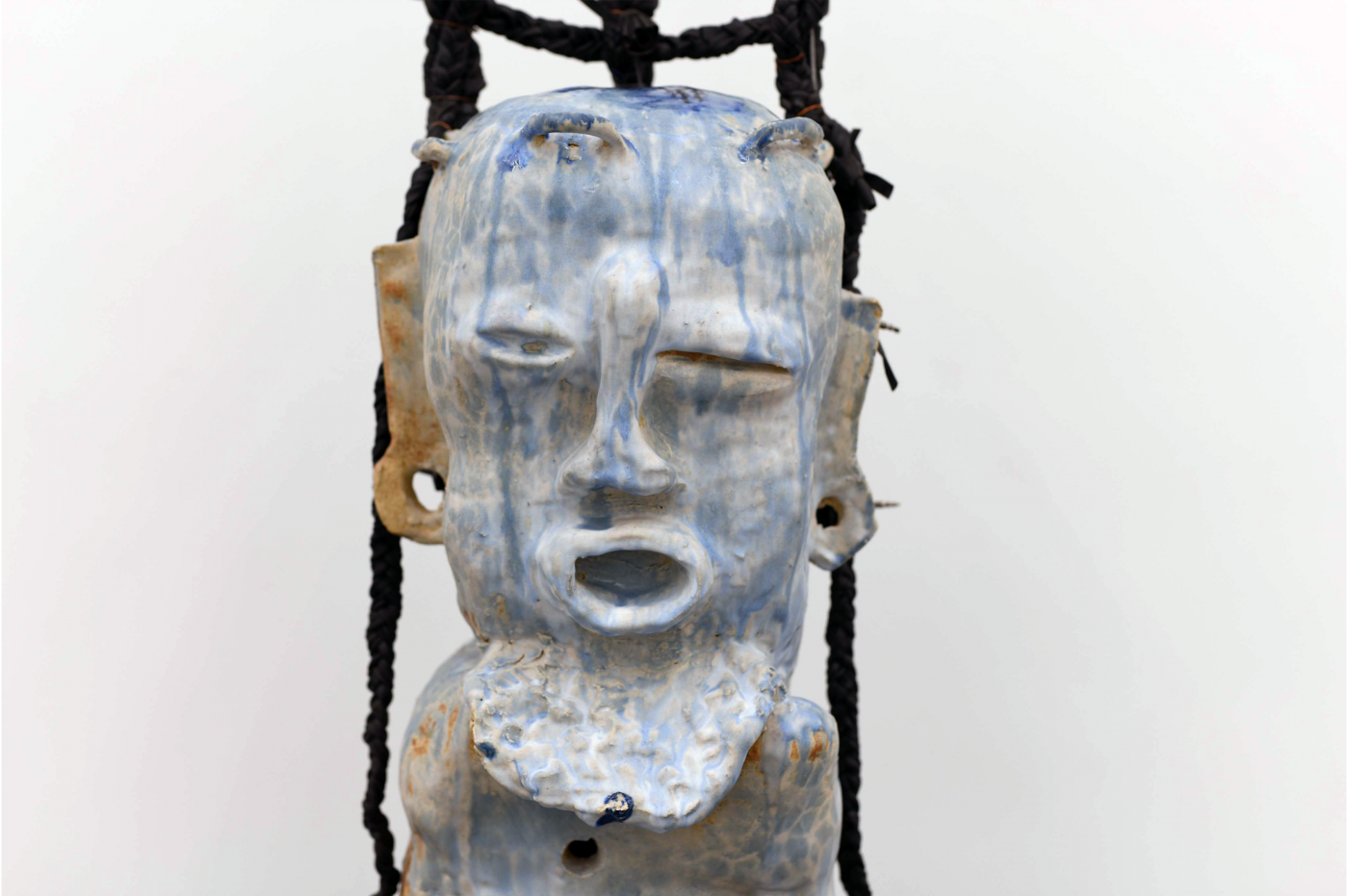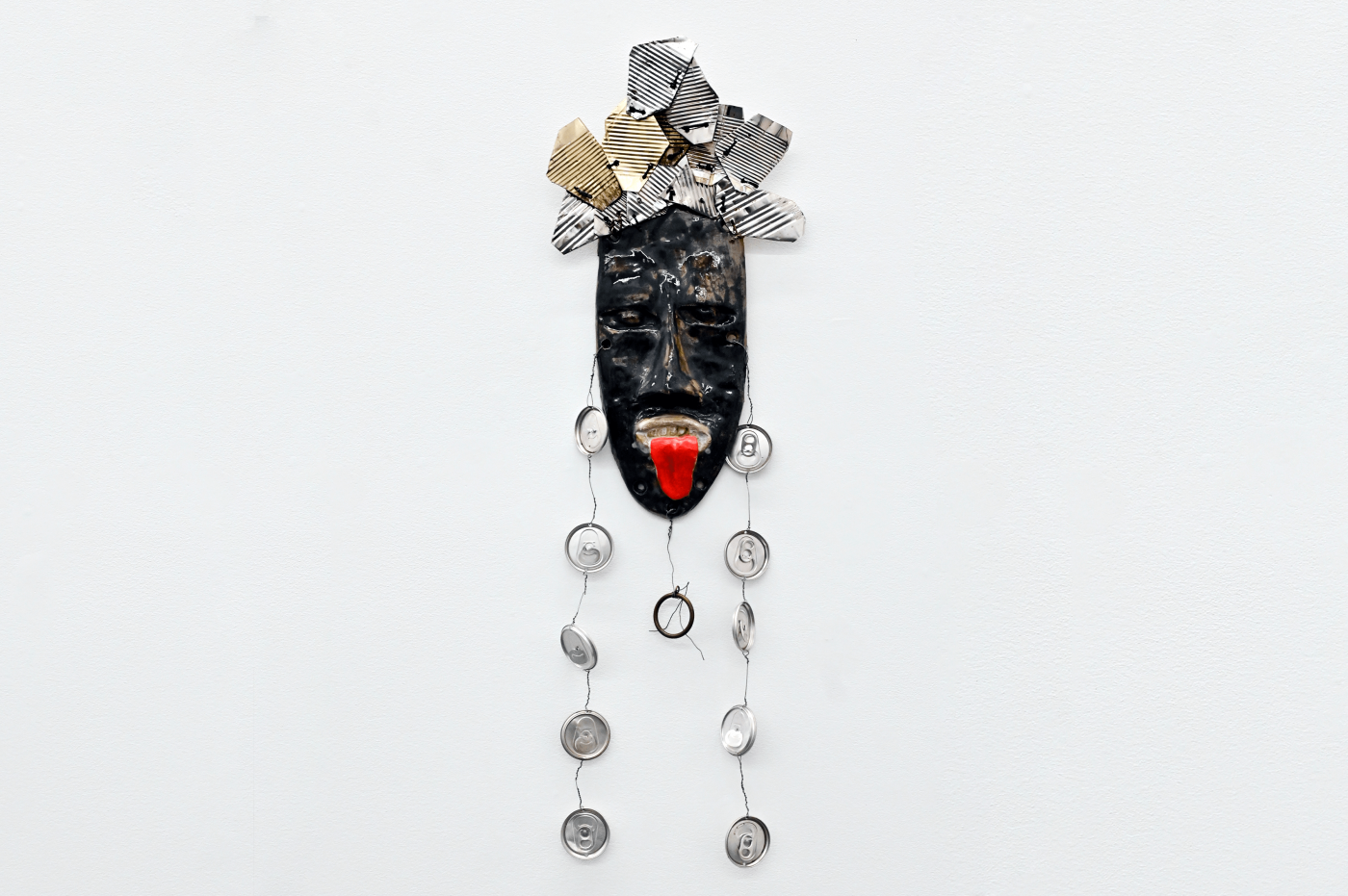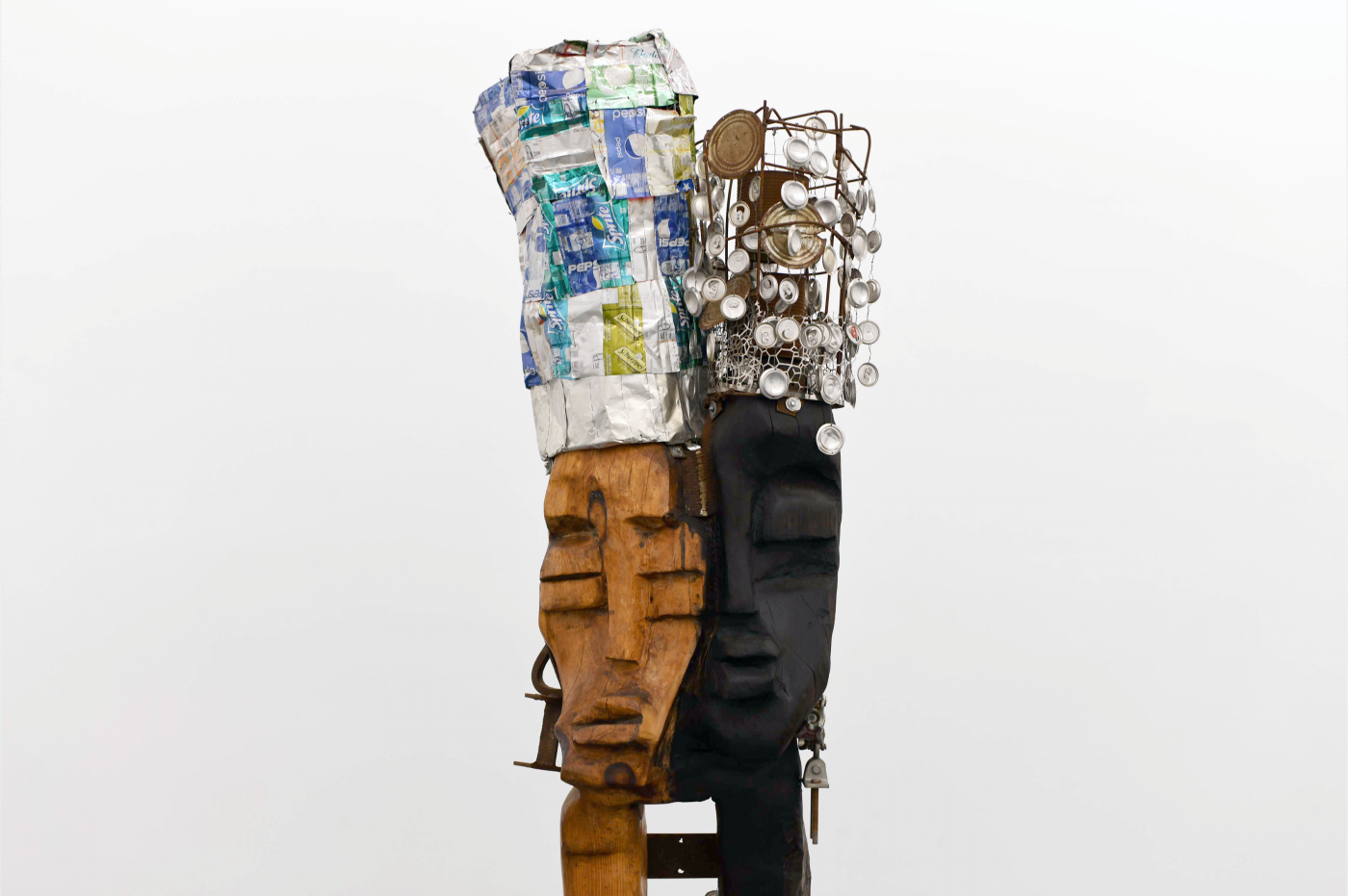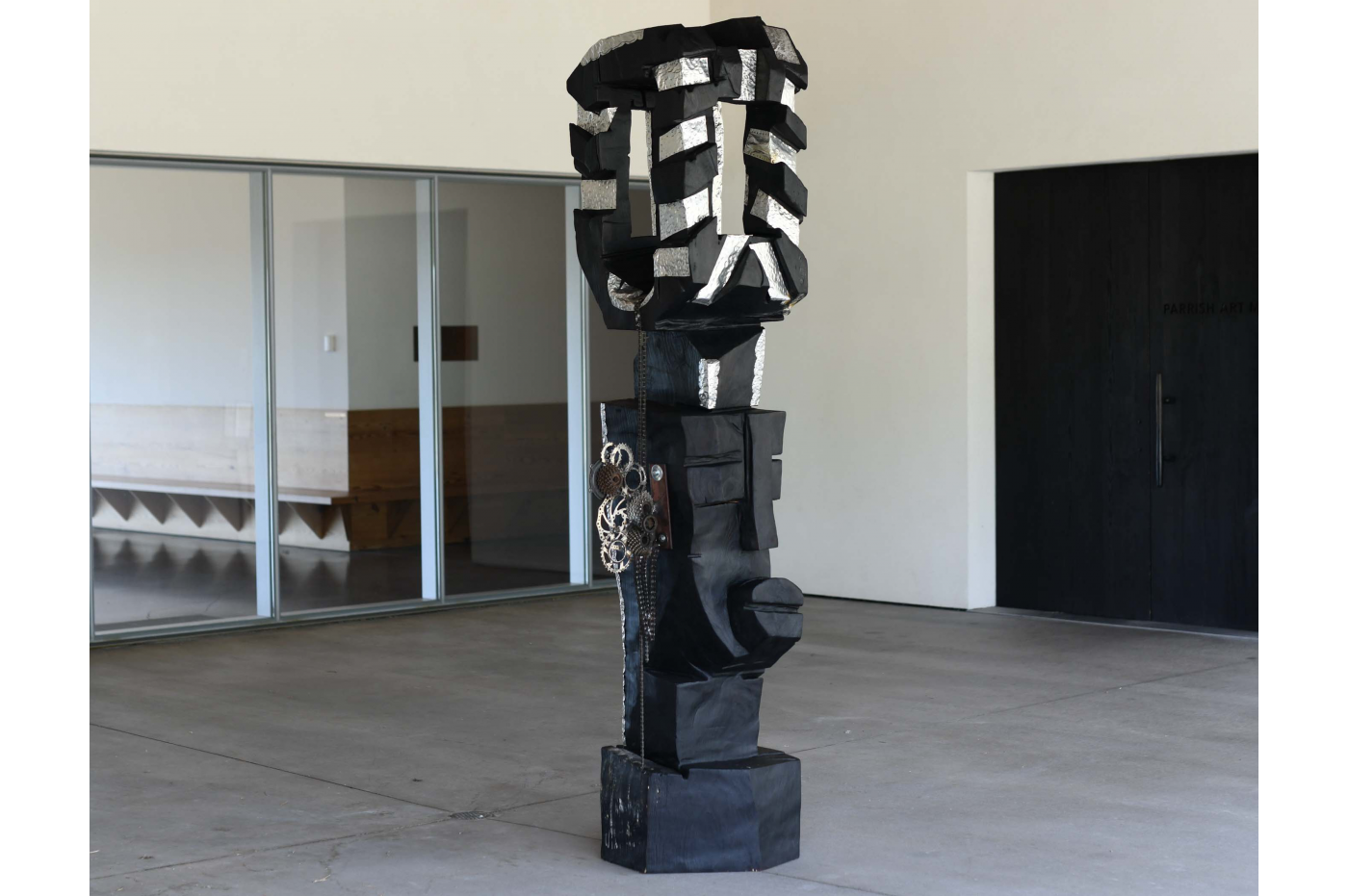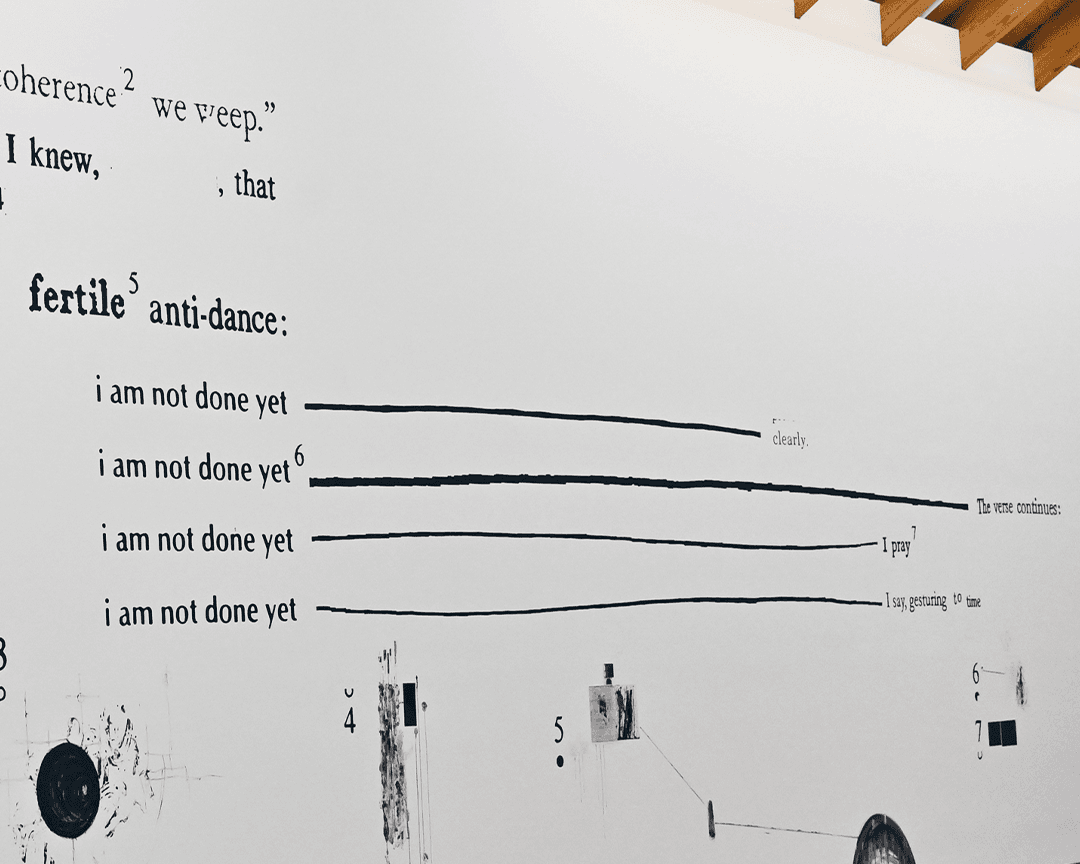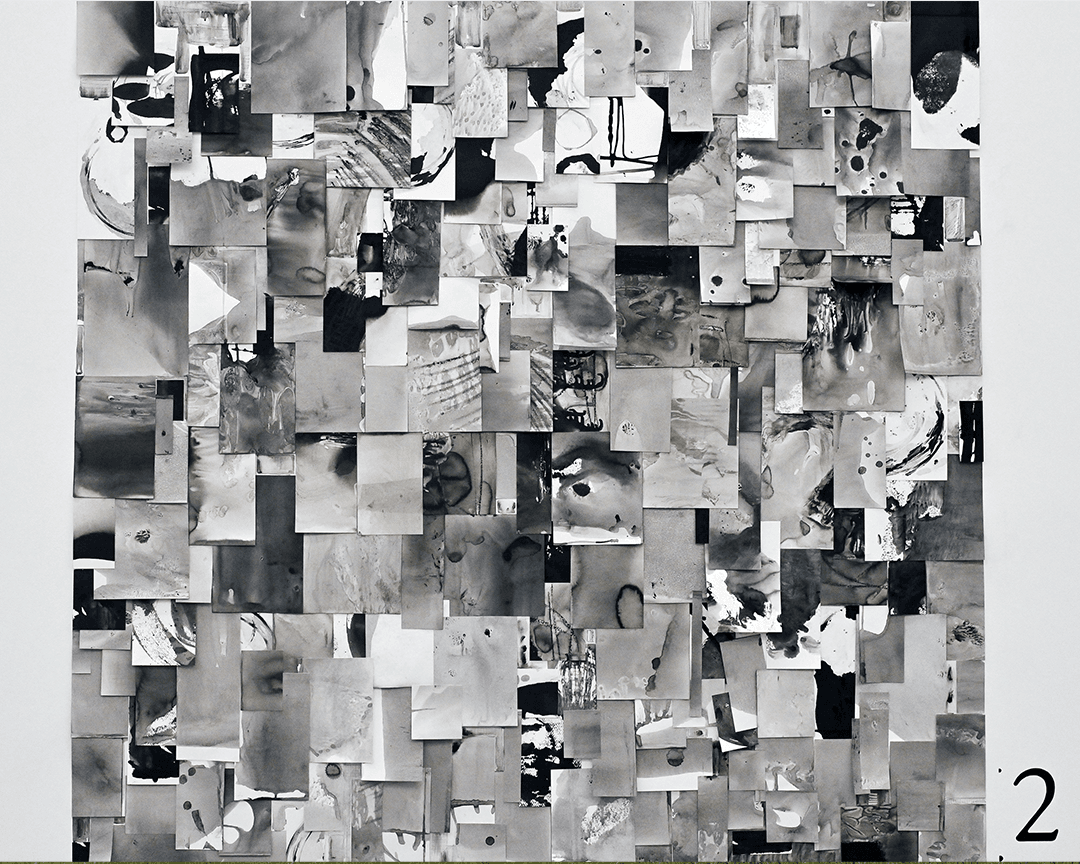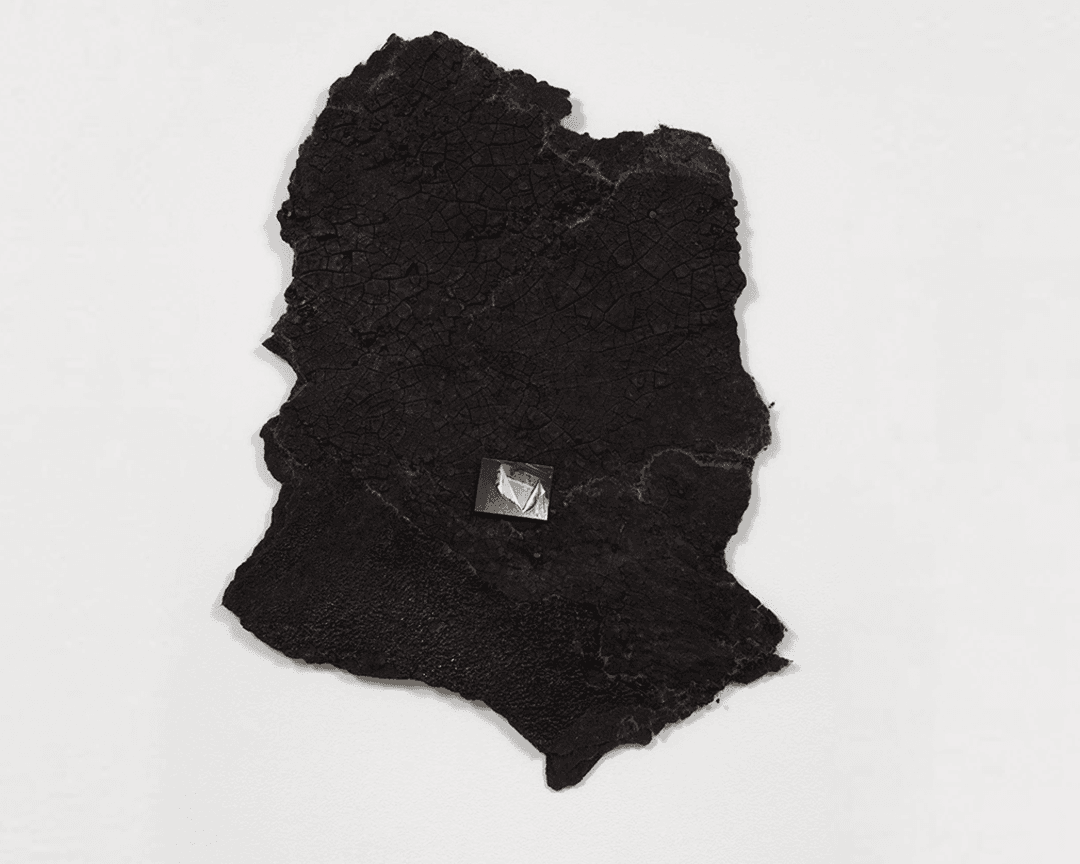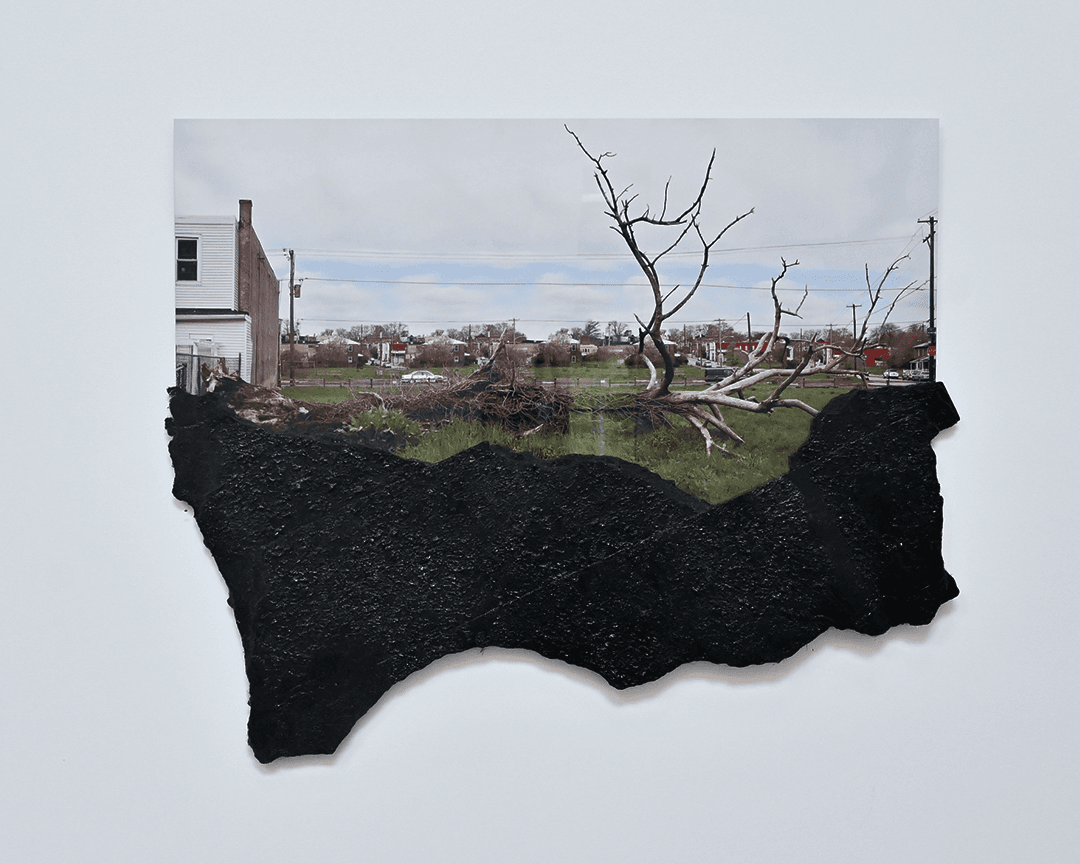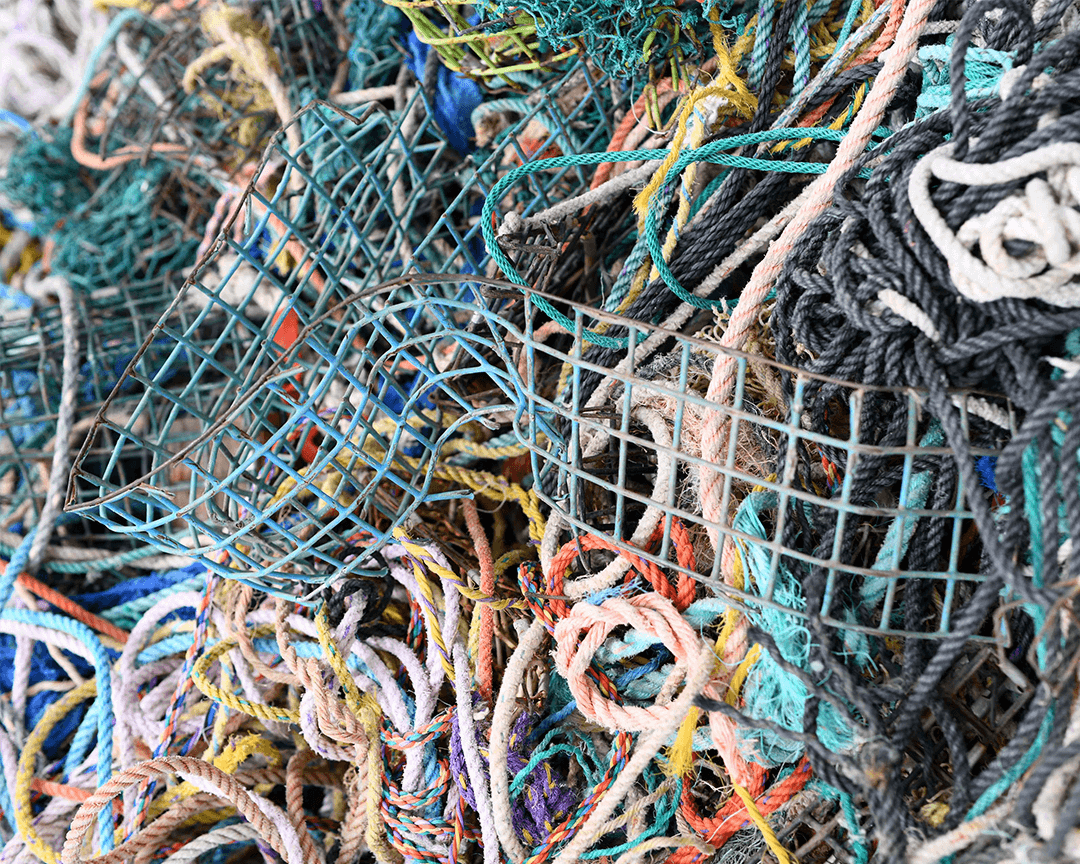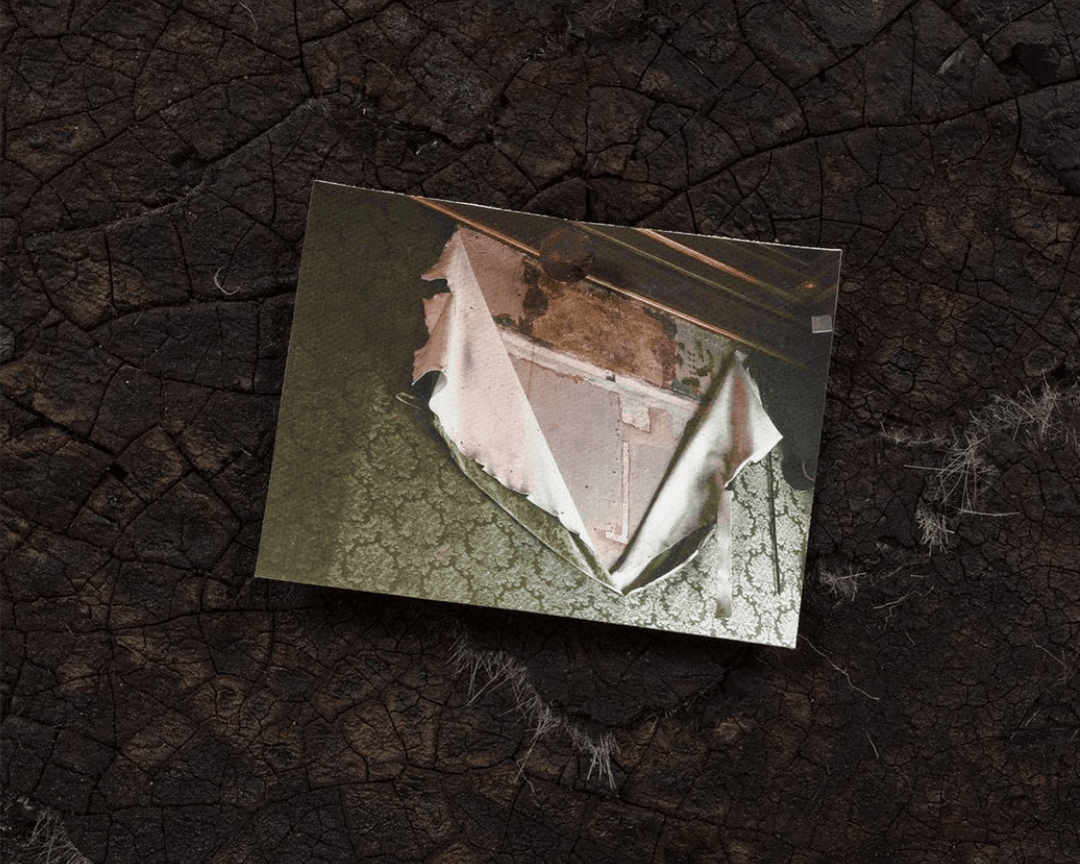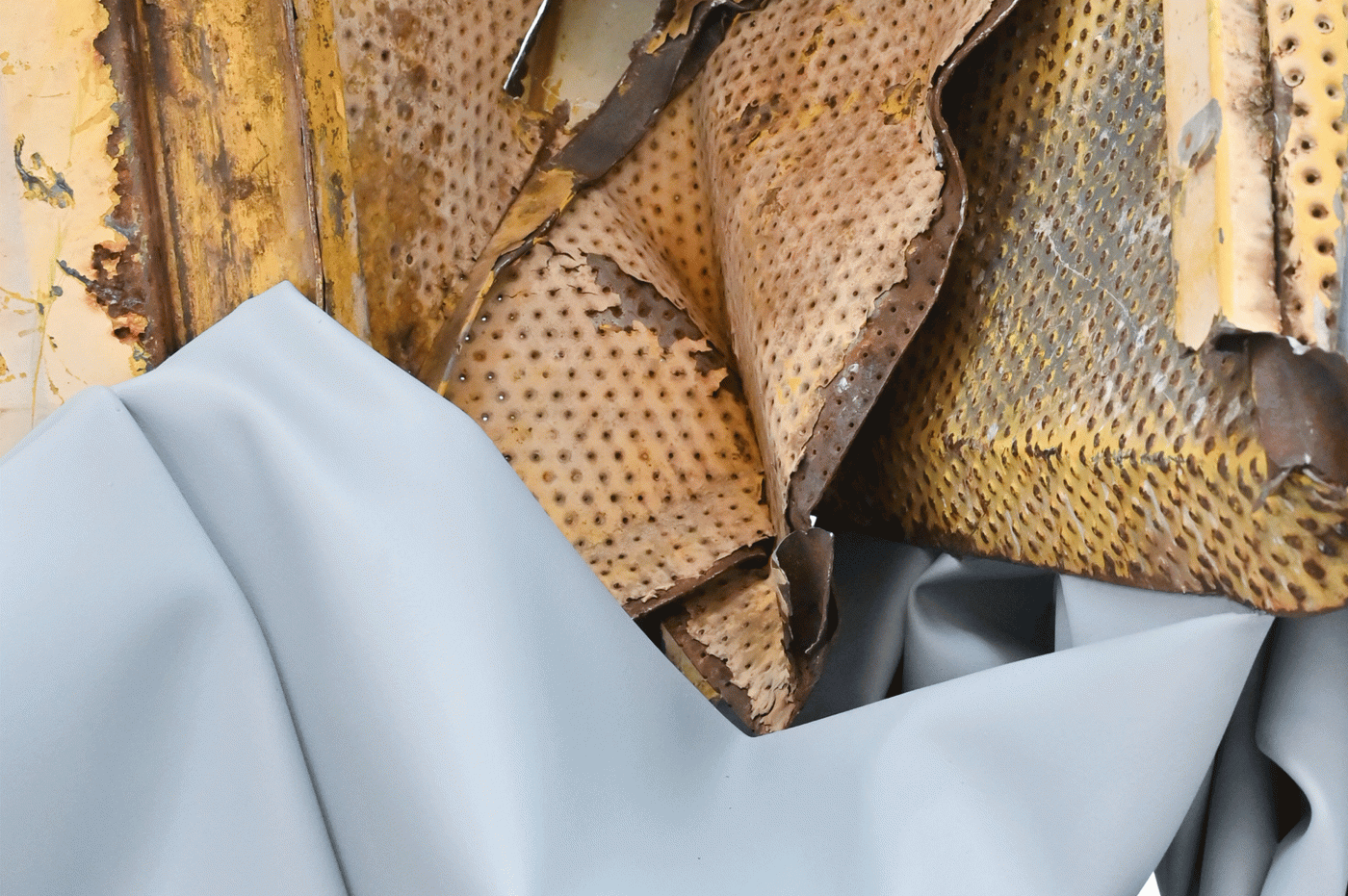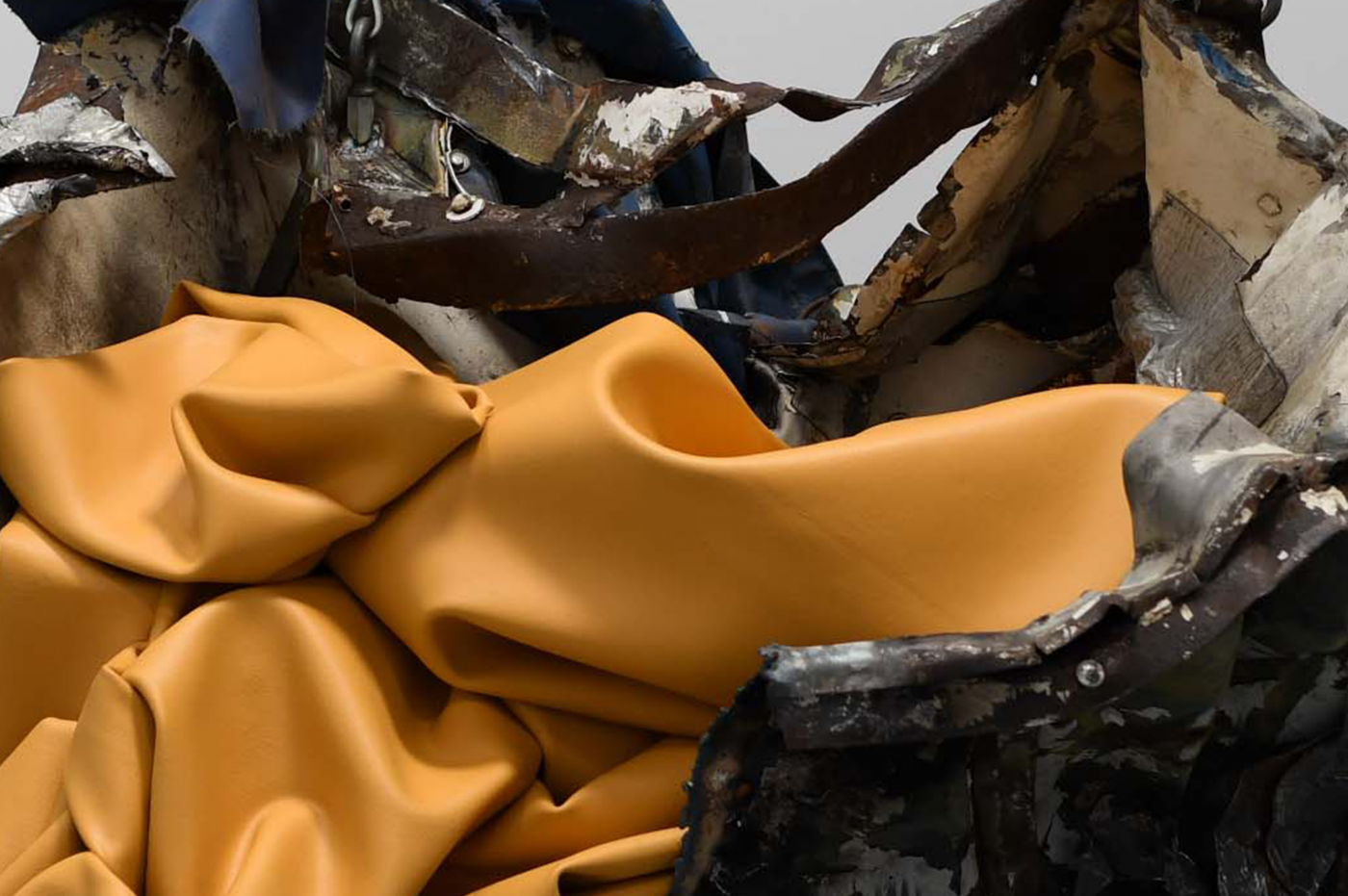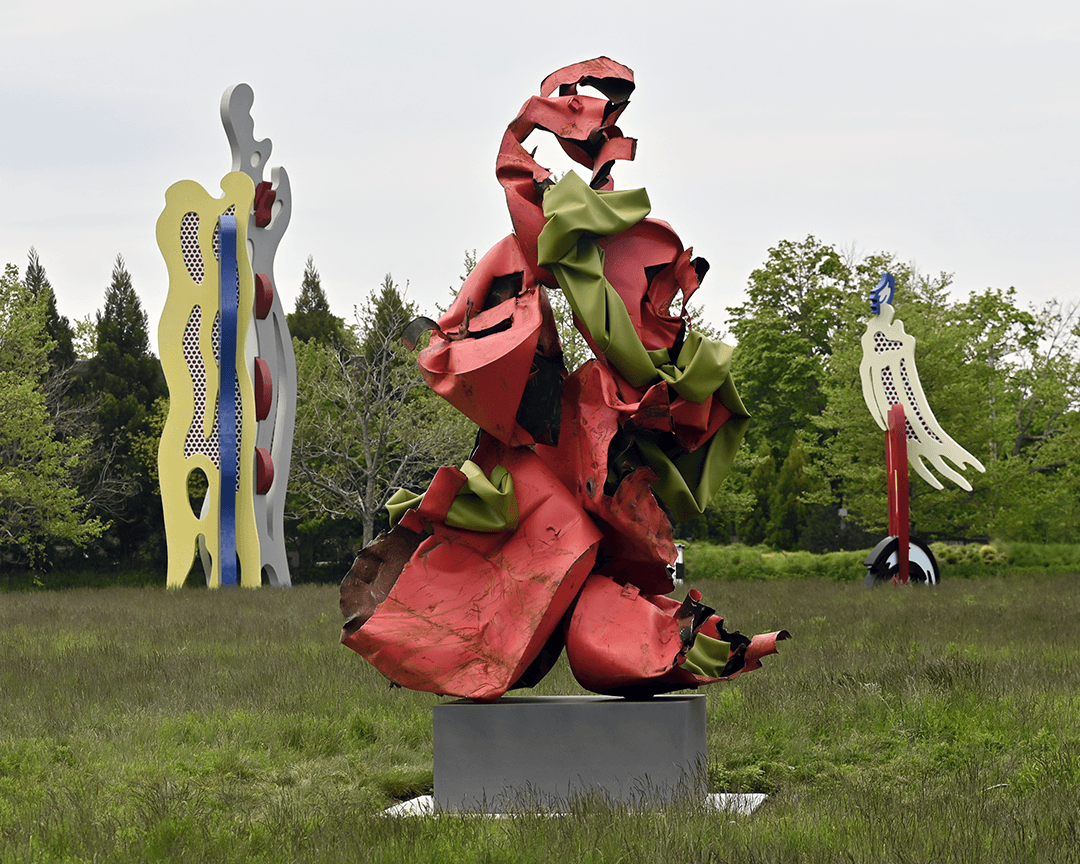Curated by Racquel Chevremont and Mickalene Thomas—collectively known as Deux Femmes Noires—Set It Off brings together work by Leilah Babirye, Torkwase Dyson, February James, Karyn Olivier, Kameelah Janan Rasheed, and Kennedy Yanko. Often combining multiple elements of paintings, sculpture, installation, sound, and language, each artist in Set It Off engages the monumental, the site-specific, or the immersive in their practice.
While Dyson and Janan Rasheed employ minimalism and the grid to explore how intellectual, environmental, and architectural infrastructures are perceived and negotiated, James and Babirye create figurative work that examines personal and collective histories in relation to identity. Olivier and Yanko make monumentally scaled works that manipulate everyday objects and materials to activate history and memory. The title, Set It Off—to do something significant, to do something with intensity or with a hurricane-like force, or to change an atmosphere for the better—points to the varied, impactful work.
EXHIBITION SUPPORT
Set It Off is generously supported by George Wells; Alexandra Stanton and Sam Natapoff; Susan and Timothy Davis; Sandy and Stephen Perlbinder; Robin and Frederic Seegal; Carla Camacho, Lehmann Maupin; and Stephanie Horton. The Parrish Art Museum’s programs are made possible, in part, by the New York State Council on the Arts with the support of Governor Kathy Hochul and the New York State Legislature, and by the property taxpayers from the Southampton School District and the Tuckahoe Common School District.
BIOGRAPHICAL INFORMATION
Leilah Babirye is known for her ability to transform everyday materials into objects that address issues surrounding identity, sexuality, and human rights. In Set It Off, the artist presents seven free-standing sculptures and four wall hanging sculptures. Each work is composed of debris collected from the streets of New York along with elements of ceramics, metal, and/or wood that have been carved, welded, burned, and glazed. Babirye explains, “Through the act of burning, nailing, and assembling, I aim to address the realities of being gay in the context of Uganda. Recently, my working process has been driven by a need to find a language to respond to the recent passing of the anti-homosexuality bill in Uganda.” In one work, Tuli Mukwano (We Are in Love), 2018, a free-standing sculpture depicts two abstracted figures carved out of wood in a style resembling traditional African masks. The figures, caught in a lovers embrace, are adorned with headdresses, one made of woven soft drink package wrappers—Sprite, Pepsi, Schweppes—and the other from soda and food can tops, chicken wire, and found metal. The artist’s choice to use discarded materials responds to the pejorative term for a gay person in her native Luganda language. The term, “ebisiyaga,” meaning sugarcane husk, refers to the portion of the sugarcane that is cast off and discarded.
Torkwase Dyson utilizes diverse media to create paintings that address the interconnectivity between ecology, infrastructure, and architecture, with an emphasis on the ways Black and brown bodies perceive and negotiate space as information. Set It Off features eight paintings that engage abstraction, landscape, and architecture through the poetic juxtaposition of painterly gesture, surface tension, and diagrammatic line. In The Horizon 01 (2017) and The Horizon 02 (2017), Dyson creates two nearly monochromatic compositions that employ black tonality punctuated by distinct white lines. Each painting is built slowly through the accumulation of washes of color and the careful configuration of minimal geometric elements, creating a distinct tension between image and object. Dyson’s titles make direct reference to the line at which the earth’s surface and the sky appear to meet. However, in these works, the horizon appears disrupted, fractured, and broken, inviting the viewer to consider the manifold ways space is experienced, perceived, and negotiated. For Dyson, an urgency exists concerning visual spatial awareness both historically and today, particularly with respect to how the body unifies, balances, and arranges itself within natural and built environments, which is the expressive and discursive structure that lies at the heart of her work.
February James is best known for her paintings of ethereal, expressive portraits that reflect on perceived Black identity, both communal and personal. Using a combination of muted watercolors and ink, as well as bright pastels and oil paints, James’ subjects resemble a dream or memory with smudged and distorted features. For Set It Off, James presents These Are My Ghosts To Sit With (2022), a multi-part installation comprised of a series of 28 portraits and a cardboard living room that is encased within a wooden frame and set in the center of the room. The central cardboard installation, painted in the same smudged manner as the figures, visualizes the way we identify and relate to our memories of objects and spaces. Here, James uses the objects as surrogates for the people who once occupied the room. The paintings and works on paper that surround the framed installation act as the witnesses, or perhaps ghosts of past occupants. For James, “The use of cardboard reinforces the need to ‘make do’ with what we have and embodies the fragility and temporality of individual reality…Within a blink of an eye the entire thing can be damaged, destroyed, or no longer here.”
Kameelah Janan Rasheed is a learner whose text-based work grapples with the poetics-pleasures-politics of Black knowledge production, information technologies, [un]learning, and belief formation. Widely regarded for her investigations of varying modes of visibility, Rasheed creates what she describes as “ecosystems of iterative and provisional projects.” These projects encompass architecturally scaled Xerox-based collages, large-scale public installations, publications, prints, digital archives, lecture-performances, library interventions, performance scores, poems/poetic gestures, and video. For Set it Off, Rasheed presents Primitive Hypertext, II (after Octavia Estelle Butler), a large text-based wall painting and video that consider the poetics of footnotes, indices, and [self]-reference.
Karyn Olivier is known for her sculptures and installations that engage history and memory through the subtle manipulation of quotidian objects and spaces. Questioning what we presume to be the function or facts of the “ordinary,” the artist asks us to reconcile our own memories with conventional meanings, ultimately revealing contradictions as well as new possibilities for interpretation. For Set It Off, Olivier will presents a series of six photographic prints on varied material encased in asphalt and roofing tar, as well as a large-scale sculpture. The sculpture, How Many Ways Can You Disappear (2021), is comprised of 13 feet of salt casted pot warp (lobster fishing rope) recovered from Matinicus Island in Maine, as well as resin and buoys. The multi-colored ropes are tangled in a heap on the ground underneath fluorescent green, blue, and pink marbled buoys that hang from a pristine white rope a few inches above. Olivier explains, “I was thinking of what remains from that tangle of rope—salt. The ropes lay limp, without function but still hold the sea—memories, unbearable loss. I was thinking of the salt’s history in relation to trade/currency, particularly the practice of trading slaves for salt in Ancient Greece.” Olivier’s work often reflects on public versus private space, recalling communal nostalgias connected to social and physical experiences and how those phenomena relate to inclusivity and acceptance. Examining how we interact with and dissect conflicting narratives and their representation is a core element of Olivier’s practice.
Combining sculpture, installation, and painting, Kennedy Yanko explores the limitations of vision by engaging the seen and unseen (or overlooked) factors that affect, contribute to, and moderate human experience. Utilizing material sourced from salvage yards along with dried paint skins, metal, marble, and glass, the artist creates monumentally scaled sculptures that address how human perception and societal expectations are often in conflict with each other. Yanko explains, “I utilize reframing to challenge what we think we understand and ask viewers to investigate realities outside of their learned ways of seeing. I select materials that vibrate with both harmony and discord to convey the interior friction that arises when one is tasked with altering a preconceived notion.” For Set It Off, Yanko presents three free-standing sculptures, including one work in the Parrish Meadow, Landscape 1 (2022), and two in the galleries: Wading the Storm, 2022, and In the Whole World Together (2022), a large, mangled piece of corten steel which is perfectly balanced on a single point. The sculpture, resembling an abstracted figure, is draped with a large blue paint skin. By joining the found object with the paint skin, Yanko creates a formal and conceptual reciprocity that makes the two surfaces nearly indivisible, and at times, indistinguishable.
ABOUT THE CURATORS
Set It Off is Chevremont and Thomas’ third curatorial project together. The first, The Aesthetics of Matter, featured young, talented emerging artists and premiered at the Volta New York Art Fair. The second, Brand New Heavies, showcased the work of three artists—Abigail DeVille, Xaviera Simmons, and Rosa-Johan Uddoh—who created immersive, site-specific installations at Pioneer Works (Red Hook, NY) that each engaged the politics around the Black body.
Racquel Chevremont was born and raised in New York City. A powerful force in the art world, she is sought out for her expertise and experience as an art consultant, advising institutions, corporations, collectors, and artists. Chevremont began her career in the arts through lending work from her personal collection for museum exhibitions. She joined the acquisition committees of the Studio Museum in Harlem and the Solomon R. Guggenheim Museum in 2003, and concurrently co-founded the State Street Salon, a Brooklyn-based hub for artists, curators, and collectors. Since then, Chevremont has curated work for numerous well-known television productions, including Law and Order: Organized Crime, And Just Like That…, Empire, First Wives Club, and the upcoming Netflix movie Leave the World Behind, as well as for gallery exhibitions such as Mining the Archive (2021) with Yancey Richardson Gallery.
Alongside her curatorial and consulting endeavors, Chevremont has also had a long career in modeling. In 1991, two years into her studies at New York University, she was discovered by photographer and Elite Model Management scout Steve Landis at the HMV on 86th Street. That chance meeting led to a career of over 20 years as a model for Elite Model Management and Wilhelmina Models, which continues to this day.
Mickalene Thomas was born and raised in New Jersey and lives and works in New York, NY. A multidisciplinary artist and innovative shapeshifter, she recently debuted her critically acclaimed global exhibition, Beyond the Pleasure Principle, on view across spaces in New York, London, Paris, and Hong Kong throughout the 2021 fall season. Outside of her core practice, she is a curator, educator, and mentor to many emerging artists. Thomas continues to cultivate her theme of mentorship through Pratt>Forward, a new platform of which she is a co-founder and director. While simultaneously embarking on monumental solo exhibitions, Thomas curates multiple exhibitions at galleries and museums. She made her curatorial debut in 2009 with exhibitions at Collette Blanchard Gallery and went on to create tête-à-tête, a tour-de-force group exhibition featuring work by emerging and mid-career artists of color that, in and of itself, has transformed into a platform for the artists it represents. The long-term, ever-changing exhibition began in 2012 and has toured nationally and internationally at Galerie Nathalie Obadia, David Castillo Gallery, Georgia Museum of Art, and The Henry Museum, among others.
In 2015, Aperture published Thomas’ preeminent monograph, MUSE: Mickalene Thomas Photographs.; alongside Aperture Gallery’s touring of its respective tête-à-tête globally starting in 2016. Thomas has also curated Better Nights at the Bass Museum and Mickalene Thomas: A Moment’s Pleasure at Baltimore Museum of Art, as well as Better Days, an immersive art exhibition at Volkshaus in Basel, Switzerland.


